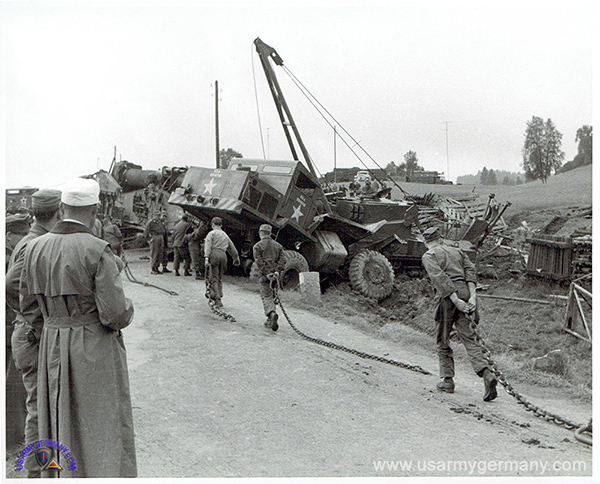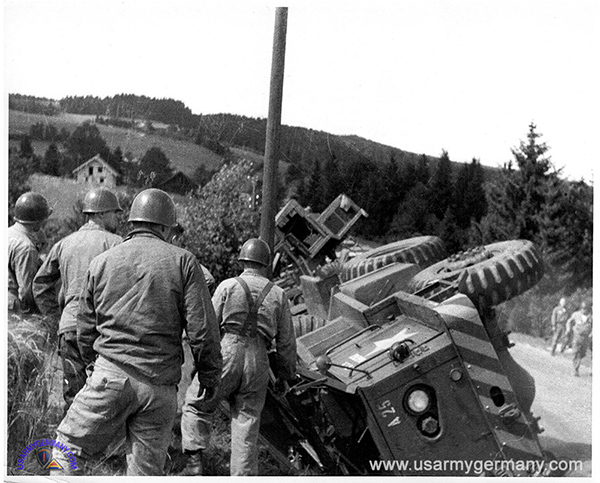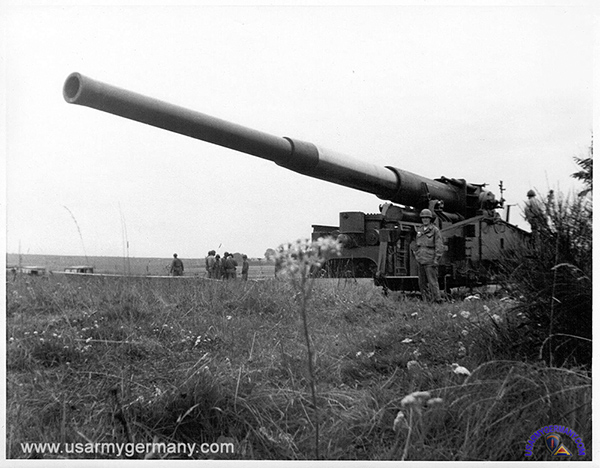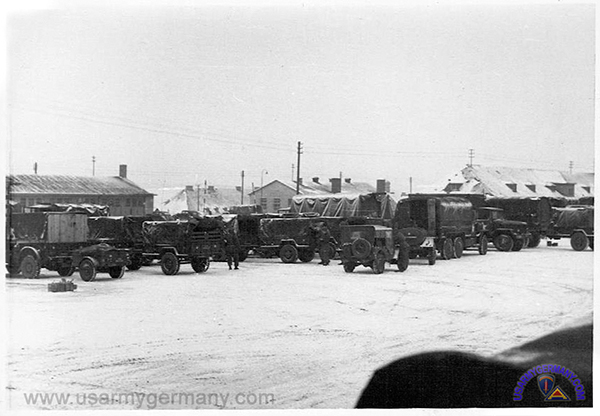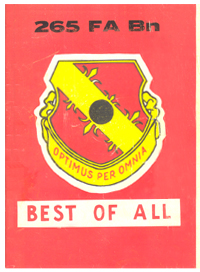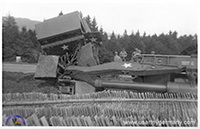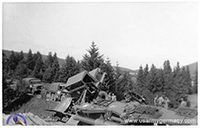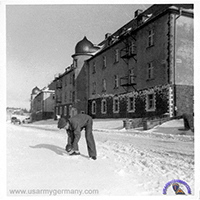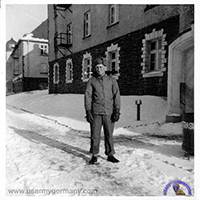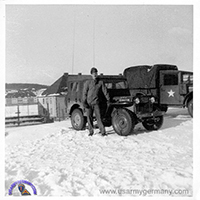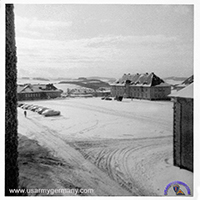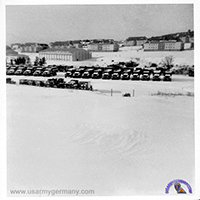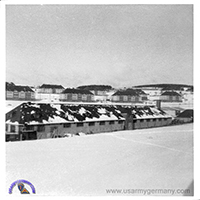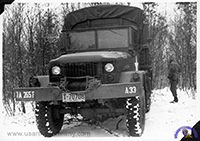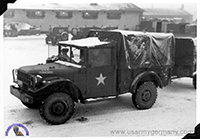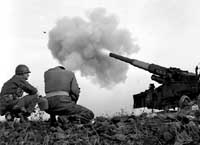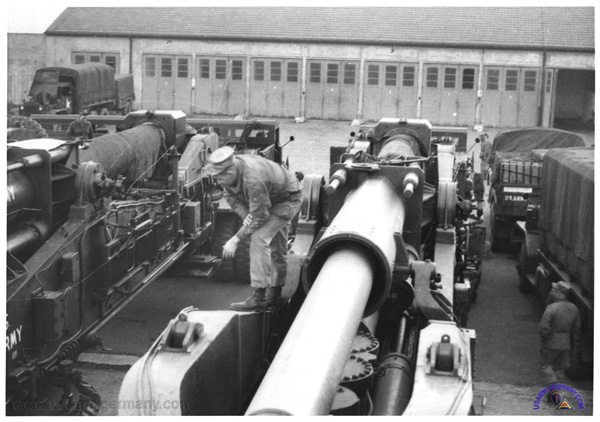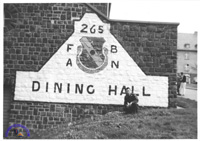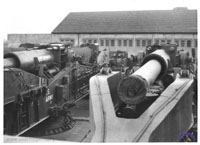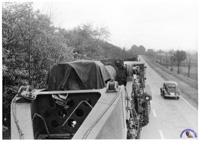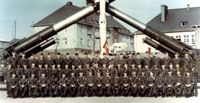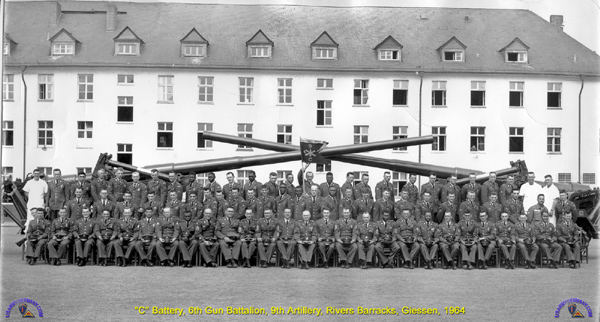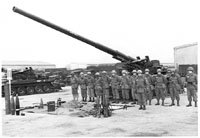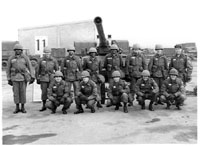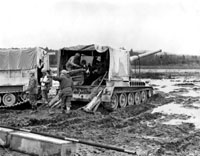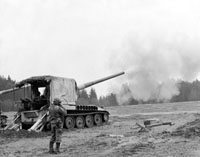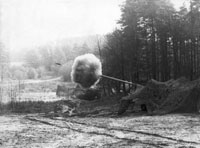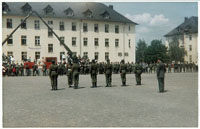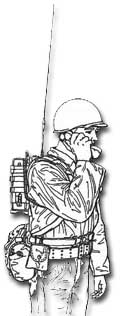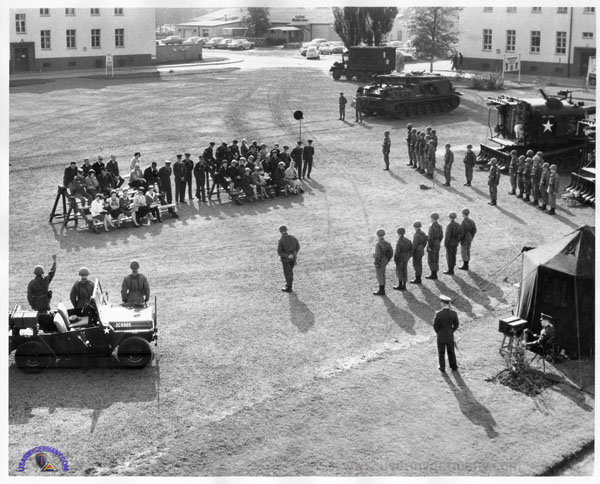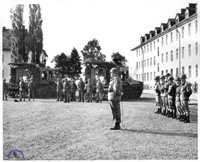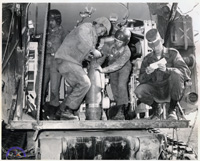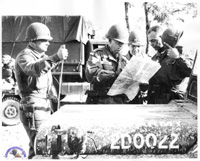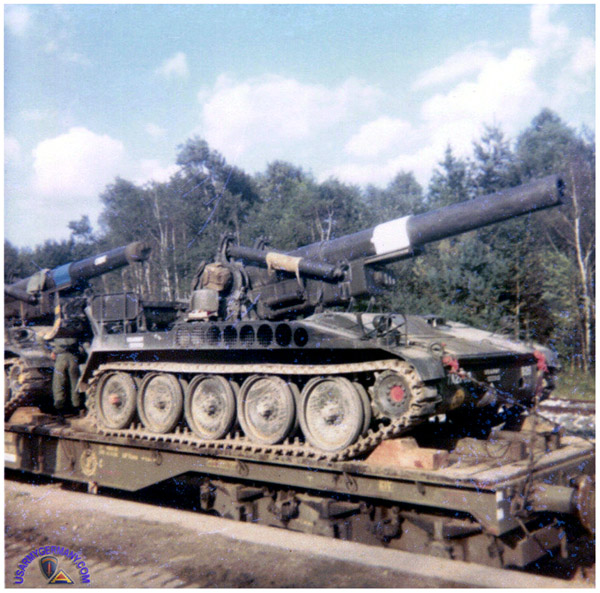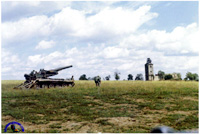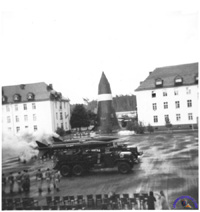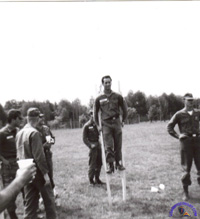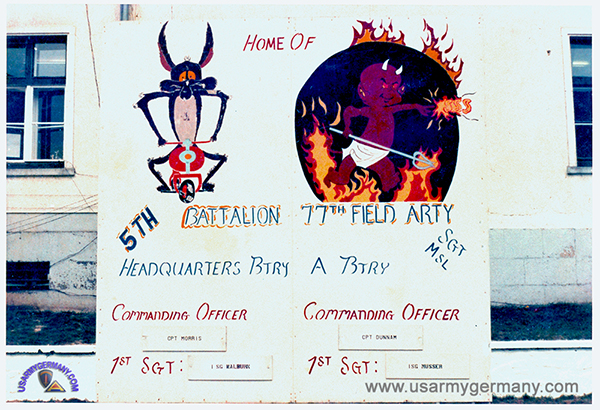| If you do
NOT see the Table of Contents frame to the left of this page, then Click here to open 'USArmyGermany' frameset |
|||||||||||||||||||||||||||||||||||||||||||||||||||||||||||||||||||||||||||||||||||||
42nd Field Artillery Brigade |
|||||||||||||||||||||||||||||||||||||||||||||||||||||||||||||||||||||||||||||||||||||
|
|
|||||||||||||||||||||||||||||||||||||||||||||||||||||||||||||||||||||||||||||||||||||
|
|||||||||||||||||||||||||||||||||||||||||||||||||||||||||||||||||||||||||||||||||||||
|
|
|||||||||||||||||||||||||||||||||||||||||||||||||||||||||||||||||||||||||||||||||||||
| 42nd FA Group/Brigade History | |||||||||||||||||||||||||||||||||||||||||||||||||||||||||||||||||||||||||||||||||||||
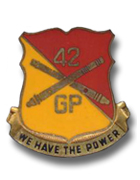 42nd Field Artillery
Group DUI
42nd Field Artillery
Group DUI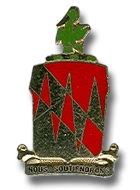 42nd
Field Artillery Gp/Bde DUI (approved 22 Nov 1967) 42nd
Field Artillery Gp/Bde DUI (approved 22 Nov 1967) |
|||||||||||||||||||||||||||||||||||||||||||||||||||||||||||||||||||||||||||||||||||||
| 1953 | |||||||||||||||||||||||||||||||||||||||||||||||||||||||||||||||||||||||||||||||||||||
|
(Source:
Annual Historical Report 1953-54, HQ USAREUR)
|
|||||||||||||||||||||||||||||||||||||||||||||||||||||||||||||||||||||||||||||||||||||
|
The
42nd Field Artillery Group was activated
in Nellingen, Germany, and assigned to Seventh Army effective 2
January 1953. The group consisted at the time of only the Headquarters
and Headquarters Battery, which provided the command structure for
the 280mm artillery battalions subsequently assigned to Seventh
Army upon their arrival in the theater.
By the spring of 1955, all six of the planned 280mm battalions had arrived in theater. One was assigned to each corps (V Corps - 216th FA Bn attached to the 36th FA Gp; VII Corps - 867th FA Bn attached to the 35th FA Gp), the other four 280mm battalions (59th, 264th, 265th and 868th FA Bns) remained attached to the 42nd FA Gp, which was assigned to Seventh Army Artillery. |
|||||||||||||||||||||||||||||||||||||||||||||||||||||||||||||||||||||||||||||||||||||
| 1957 | |||||||||||||||||||||||||||||||||||||||||||||||||||||||||||||||||||||||||||||||||||||
|
(Source:
Annual Historical Report 1957-58, HQ USAREUR)
|
|||||||||||||||||||||||||||||||||||||||||||||||||||||||||||||||||||||||||||||||||||||
|
Support
of the Northern Task Force
The Northern Task Force (NORTAF), formerly the 1st US Artillery Task Force (Provisional), had a wartime mission of providing atomic support to the Northern Army Group (NORTHAG). Its peacetime mission was to be so trained, organized, and equipped as to insure successful accomplishment of its wartime mission. NORTAF, or the 42nd Field Artillery Group, was regularly assigned to the US Seventh Army for peacetime training, administration, and logistical support. In the event of an emergency NORTAF would be reassigned to USAREUR (Theater Army) on order of CINCUSAREUR, who alone had the authority to move the force -- or parts thereof -- when directed by higher headquarters. If and when NORTAF was deployed to, or carried out peacetime training exercises in, the NORTHAG area, USACOMZEUR was to provide wartime advanced-weapons support and post D-day resupply of atomic weapons as well as conventional logistical support. |
|||||||||||||||||||||||||||||||||||||||||||||||||||||||||||||||||||||||||||||||||||||
ORGANIZATION (Feb 1957): |
|||||||||||||||||||||||||||||||||||||||||||||||||||||||||||||||||||||||||||||||||||||
|
|||||||||||||||||||||||||||||||||||||||||||||||||||||||||||||||||||||||||||||||||||||
| 1958 | |||||||||||||||||||||||||||||||||||||||||||||||||||||||||||||||||||||||||||||||||||||
(Source: Annual Historical Report 1958-59, HQ USAREUR) |
|||||||||||||||||||||||||||||||||||||||||||||||||||||||||||||||||||||||||||||||||||||
| Atomic Delivery Weapons for NORTHAG Article moved to Overview Page, Field Artillery section. |
|||||||||||||||||||||||||||||||||||||||||||||||||||||||||||||||||||||||||||||||||||||
PENTOMIC Changes - 1957/58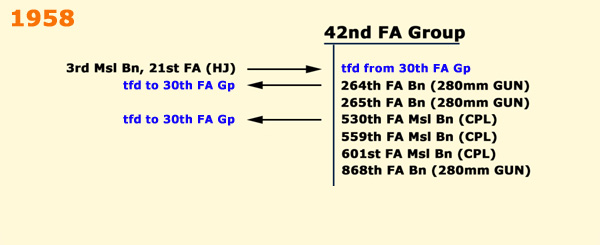 |
|||||||||||||||||||||||||||||||||||||||||||||||||||||||||||||||||||||||||||||||||||||
ORGANIZATION (30 June 1958): |
|||||||||||||||||||||||||||||||||||||||||||||||||||||||||||||||||||||||||||||||||||||
|
|||||||||||||||||||||||||||||||||||||||||||||||||||||||||||||||||||||||||||||||||||||
| [1] STATION LIST, 30 June 1958 | |||||||||||||||||||||||||||||||||||||||||||||||||||||||||||||||||||||||||||||||||||||
| 1968 | |||||||||||||||||||||||||||||||||||||||||||||||||||||||||||||||||||||||||||||||||||||
1980s |
|||||||||||||||||||||||||||||||||||||||||||||||||||||||||||||||||||||||||||||||||||||
(Source: History of the 42nd Field Artillery Brigade, Bde PAO, 1980s) |
|||||||||||||||||||||||||||||||||||||||||||||||||||||||||||||||||||||||||||||||||||||
On 2 January 1953, the 42nd Field Artillery Group was activated at Nellingen, Germany and subsequently moved to Giessen. 2nd HOW Bn, 92nd Artillery arrived in Europe on 25 June 1958 and was attached to the 42nd FA Gp with station at Rivers Barracks, Giessen. 3rd Bn, 79th Artillery arrived in Europe on 1 June 1959 and was located at Rivers Barracks where it was attached to the 42nd FA Group. 1st Bn, 333rd FA, a LANCE battalion, arrived in Europe on 1 Sept 1971 and was attached to the 42nd FA Gp with station in Wiesbaden. On 16 September 1980, the 42nd FA Gp was redesignated as the 42nd FA Brigade. |
|||||||||||||||||||||||||||||||||||||||||||||||||||||||||||||||||||||||||||||||||||||
| 1981 | |||||||||||||||||||||||||||||||||||||||||||||||||||||||||||||||||||||||||||||||||||||
| Letter sent by Headquarters V Corps to the commander of the 42nd Field Artillery Brigade with a summary of the findings from the general inspection of Hq 42nd FA Bde, HHB and the 202nd MP Company that was performed in December 1981. | |||||||||||||||||||||||||||||||||||||||||||||||||||||||||||||||||||||||||||||||||||||
| If you have more information on the history or organization of the 42nd FA Brigade (or any of the subordinate units), please contact me |
|||||||||||||||||||||||||||||||||||||||||||||||||||||||||||||||||||||||||||||||||||||
Articles & Correspondence from Readers |
|||||||||||||||||||||||||||||||||||||||||||||||||||||||||||||||||||||||||||||||||||||
| 1953 | |||||||||||||||||||||||||||||||||||||||||||||||||||||||||||||||||||||||||||||||||||||
| (Source: Email from Hayes N. Thomas, Hq/Hq Btry, 42nd FA Gp) | |||||||||||||||||||||||||||||||||||||||||||||||||||||||||||||||||||||||||||||||||||||
I was the 22nd man in the brand new 42nd FA Group. I got there before the CO, Col White, did. I arrived in Germany on the 26th of Jan 1953; was at Zweibrücken for a few days at the repo depot then straight to Nellingen Airfield where we stayed about 4 months and then to Baumholder behind the Rhine for the rest of my tour.
I was a college graduate electing to remain as an enlisted man instead of spending 4 years OCS, Korea as FO, etc. All Sgt billets were filled by re-uppers from Korea so Cpl was as high as we could get. They came along about three months before I rotated and offered four of us a commission by signing up for 18 months. I told the guy that I had 22 years in as a civilian, let me out I was going for 75 (I made 76 on Mar 9) so instead of pushing up daisies (or bamboo) in Viet Nam, I am writing you this email. Col White's (his first name escapes me, I'm thinking Charles) brother in law ran the repo at Zweibrücken so the 42nd got the pick of the crop as long as he was there. About a month later they offered two of us a First Lt commission. I have never regretted my decision to get out.
I was in the S2 section of Hq & Hq Battery of the Group headquarters. My main job was getting the paper work - 398 forms (or was it 298 - personal history for Top Secret clearance - 4 legal size pages back and front of one form and I had to make about 4 carbon copies - one mistake anywhere and I had to start all over again), as I recall, for practically everybody in Hq & Hq except the Wire Section and the cooks. Half of Hq & Hq was Wire Section and the rest were in the S-1 thru S4 sections, plus the Battery Hq (total about a 100 men). We had, on average, more education than the officers did and we had three West Point officers including Col White, a Lt (later Capt Middleton), and a 1st Lt by the name of Rienken.
Once the guns got there, most of the forms for Top Secret were with the FBI or whoever did the background checks and I spent a lot of time with our S-2 (Captain Young) visiting the units. One of my jobs was posting the daily weather report on the bulletin board. I would call somebody in Kaiserslautern and I had two stencils cut, one said RAIN and the other said SNOW and I posted one or the other it seems like everyday. The few days that the sun shone I was so happy that I would type the whole thing out. We also had a 'classified' trash can in every office and every day I collected the contents and burned them. I have burned more classified cigarette butts than anybody you ever heard of.
The official Class 'A' summer uniform consisted of OD pants, OD overseas cap, OD tie and kakhi shirt. It was so soon after the war that we could not wear civilian clothes on leave or pass in Germany until November of 1953. The first day we could wear civvies, one of our 2nd Lt's showed up in our barracks room in civvies ready to go to town with us. We all had college degrees and the only difference was he had had ROTC. The other officers wives had gotten there by this time and he was one lonesome puppy. Before we got to Baumholder as a unit, a group of about 4 or 5 of us went ahead (Apr 1953) with a couple MP's and engineers. We measured EVERY bridge (took pictures of them, too) in what used to be called the northern part of the French Zone which was shaped like an hour glass. We had never seen the guns as they did not get there until Nov 1953, so we improvised by sawing off a broom handle about 18 inches long (2 of them) tied a rope between them which was supposed to represent the guns length, we would then walk around a curve and if the rope hit the wall, that building had to come down in case the Russkies came over the border.
One thing I remember about the three weeks was that, because we were in the French Zone, two French officers with drivers had to accompany us to see what we were up to. We could not get the French up in the morning so about on the 3rd day we got up, had a leisurely breakfast and left them sleeping. We never saw them again and I have always wondered what those two wonderful officers reported back. By the way, if you remember, in that part of Germany there most have been what seems like a million short bridges going across the bachs (streams). If a bridge was short enough so that only one wheel of the prime movers got on, the bridge had to support only about 3 tons. Besides the forms, it took us sometime to write, edit and type the report of this trip giving the Bn's instructions where they could go with the guns and where they couldn't go. When we first got to Baumholder, we had no office building, so we had to double up with 16 of us in a German barracks room built for 6 or 8 men. We ate with the 2nd Armored Div, as we had no mess hall at first. Tempers were short as none of the NCO wives had arrived yet. So. with crowded conditions, NCO's with nothing to do but yell at us, and breakfast delayed as the 2nd Armored ate first. I think they rotated the 2nd Armored after I left, same tanks, different patches. The bottom floor was used as the officies for the Hq until the building was built.
I found this web site by wondering what I would get if I did a Google on 42nd Field Arty Gp.
By the way, that was the first time I ever knew we had a unit badge, we wore nothing except the 7th Army patch.
We were kind of the 'show piece' for NATO after our office building was built, we had to wear Class 'A's a lot of the time and as a matter of fact, I wore mine out but I still have them I spent about 3 or 4 weeks in the field the whole time I was in Germany and got paid TDY for that. The few times we were in the field, a Russian Zil or whatever it was soon parked near by and 'spied on us'. I hope they liked the pictures of the latrines they took.
I will never forget the day that Col White came in about to wet his knickers because 'the GUNS are coming.' Remember, everything was Top Secret. He got the info out of the Stars and Stripes. The guns came early and I bet you are not going to hear this anywhere else, they dropped a round that hit in the town of Lawton, Ok. The next day the offending Bn was shipped out for Germany, all that is except one safty officer.
Since I sent you the first e-mail, I have had a chance to read some of the other emails on your site. I read that the first guns got there in Oct and not Nov as I remembered it. I spent about month (Oct 53) at combat intelligence school at Oberammergau and when I got back to Baumholder (early Nov), the guns were in Germany.
Sometime in 1953, the whole army had some kind of maneuvers and since we had no toys, we acted as umpires wearing soft caps and a white arm band letting the world know we were 'officials' We had to drive all over the place and I remember we were up in Hessen or Greater Hessen and we had been on the move so much for several days, the three of us (S2, S2 Sgt and yours truly). We had had nothing to eat so when we got to this small town I was sent in to find something we could eat raw. We were there to set off a simulated atomic explosion. We had rigged up a 55 gallon oil drum, cut the top out of it and mixed up a bunch of chemicals. When we threw a match in, it would send up the prettiest 'mushroom' cloud way in the air you ever saw. While I was in the small town getting food, I had a bottle of cognac in my field jacket we had been sipping on for a few days (big bottle). When I came out of the gasthaus, a column of self propelled 155's was going by. On the first or second one was a full bird sitting up front on the back. He stopped the SP and yelled at me walking around by myself wanting to know "Soldier, where is your helmet?" I pointed to the white armband and realized it was a couple layers down and while reaching in to expose the armband, the bottle of cognac fell at my feet breaking and giving me a bath up to my knees. He laughed and took off. I returned to the place where we were going to explode our firecracker and while I was gone General Hoge (the commanding officer for all of Europe) had dropped out of the sky in a helicopter. He ordered the S-2 to set it off. Right in the middle of this I come strolling up with a loaf of bread under my arm and the remains of a huge bottle of cognac all over my pants up to my knees. The general laughed, but Capt Young failed to see any humor in it.
My next encounter with a general was about a month or so before I rotated. We were in the field. We rigged up two of those big 6 byes with the huge square structures (I think they were called vans) on the back. We would then back them together like two very friendly dogs and had a blackout tarp over them. We had the S-2 and S-3 sections with huge wall maps, etc right together with lights and everything. My replacement had gotten there so he was being trained for his job during the day. I had the night duty. One of my buddies and I had staid in a tent all day (it rained the entire day) drinking cognac. He went to sleep and I went on duty drunk and as I climbed up the steps, I grabbed some feet to help me. I continued to climb up whoever's body it was, and when I got to the top, it had 4 stars on the shoulders. It was the 7th Army commander, Gen McAuliffe (the Bastogne guy that said 'nuts' to the Germans during the Battle of the Bulge). He had to see my condition and as the S-2 Sgt explained that I was getting ready to return to the land of the big PX, he laughed That was the second time that I was happy to find out that generals have a better sense of humor than Lt's and Sgt's do.
I rotated on 26 June 1954, one of the first to come home.
|
|||||||||||||||||||||||||||||||||||||||||||||||||||||||||||||||||||||||||||||||||||||
| 1956 | |||||||||||||||||||||||||||||||||||||||||||||||||||||||||||||||||||||||||||||||||||||
| (Source: Email from Roger Boehnke, Avn Sec, HHB, 42nd FA Gp, 1956-59) | |||||||||||||||||||||||||||||||||||||||||||||||||||||||||||||||||||||||||||||||||||||
| I was stationed at Baumholder, March 1956 to September 1959. Flew out of Hoppstädten all that time for the 42nd Artillery Group. I remember the H-13 (whatever the model was) had the battery under your feet when you flew solo. When you picked up a passenger you had to move the battery back on the tail boom. Kinda blows my mind to see the sophistication of Army aircraft now. I was back at Baumholder last spring and the place was really run down. Had a hard time finding Hoppstädten. The air strip was abandoned, overgrown with weeds, and was being used by a glider club. Our old hanger was being used by a government sign making company. The 98th General Hospital, which was a few blocks away and where our son was born, is now a college campus. I walked out on the old runway and a young girl came out to see what I was doing and she assured me that airplanes never flew off the air strip and that there had never been a hospital there. Kinda depressing. It was a great place to be when we were there and flying was fun and loose. We had signs up that said "Welcome to Happy Valley".
Some time late 1956 they changed 42nd FA Group to 42nd Artillery Group. The Group had three battalions and a headquarters company. The 265th FA Battalion and the 868th in Baumholder had 280 guns (atomic cannons), and the other Bn (?) in Pirmasens had Corporal missiles. Each Bn had two L-19s and the Hq Co had one L-19 and one H-13. Early 1957 the Group got a L-20.
I was in Group headquarters and the only one checked out in the L-20, so I got to go to Stuttgart to pick it up. A big deal for us at that time. Right after that I went down to 7th Army Instrument School to get an instrument ticket. On our final check ride we flew radio ranges and approaches all the way to Hamburg and spent the night there. Most of which was on the Reeperbahn. Anyhow, there were some big headaches on the flight home. We flew the L-20 on instruments all over western Europe. It was great for IMC, the clouds would come in from the North Sea and back up to Alps and stay like that for months with no turbulence. All we had was an AN/ARC-12 radio and radio direction finder (forget what it was called). Everybody except the French would let us lumber along on their airways. The French would tell us to get off their airways (we were too slow and low and didn't have the right frequencies) and we would just ignore them.
The Gp had nuclear weapon support for 7th Army and the British Army of the Rhine. I still have my NORTHAG patch. We spent a lot of time up around Düsseldorf and Wildenrath with the British and NATO forces. When we would go on maneuvers up there with the British, we would take our dress blues with us because the British would always have a dining in night while we were there. You had to be tough to survive their parties. We always stayed with the British Army pilots on maneuvers and got to know them real well. They could drink anybody under the table and would fly the same day. They flew Austers that were maintained by the RAF and were always having engine failure. We also had a couple H-34s attached to us part of the time. Our job was to go with them to get the "bird cages" which had the nuclear part of the warhead.
There was a TAAM Co (Transportation Army Aircraft Maintenance Co) next to us at Hoppstädten, which moved to Hanau early 1957. An aviation section from the 2nd Armored Div moved into their hanger. All the pilots in our Gp were glad we weren't in the Armored Div. I don't think they knew what to with their aircraft and their pilots did about everything except fly. Think there was a little jealousy about flight pay. We had some good parties with them.
We had a good relations with the Germans in the area. We let them fly their gliders off the air strip and they would let us fly with them. We got invited to a lot of hunting lodges and parties. From late 1956 to mid 1959 I was the only pilot in Gp that had an instrument ticket and was checked out in the H-13. Gone all the time, which my wife will be glad to tell you about. Anyhow, it was a great place for a new 2nd Lt and pilot right out of flight school. Wow, really rambled on. Hadn't thought about this stuff until we went back to Baumholder last spring.
|
|||||||||||||||||||||||||||||||||||||||||||||||||||||||||||||||||||||||||||||||||||||
|
|||||||||||||||||||||||||||||||||||||||||||||||||||||||||||||||||||||||||||||||||||||
| 1965 | |||||||||||||||||||||||||||||||||||||||||||||||||||||||||||||||||||||||||||||||||||||
| (Source: Email from Harvey Rubin, HHB, 42nd FA Gp, 1965-1967) | |||||||||||||||||||||||||||||||||||||||||||||||||||||||||||||||||||||||||||||||||||||
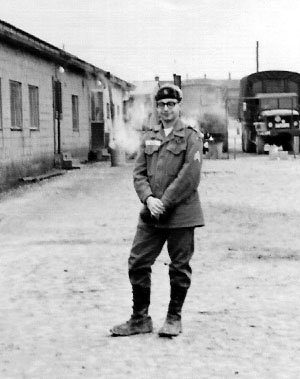 SGT Rubin at Graf SGT Rubin at Graf Here on the eve of Veterans Day, I thought I'd go over your nostalgic website again. As I read the various information you have compiled, including the emails from other vets of the 42nd and its constituent units, it occurred to me that I might be able to fill in some gaps. I arrived in Bremerhaven in April or May of 1965 after crossing the Atlantic from Brooklyn on the USNS General William O. Darby - a wonderful 8 days at sea. Then, by night train to the Repo Depot in Frankfurt, and on to Giessen. With my MOS of 051 (later 05B), Radio Operator, I was assigned to the Comm Platoon at HHB, 42nd Arty Group, in the U-shaped barracks at the Giessen depot, as described by others. My recollection is that our neighbors were the 308th QM, with whom we shared a mess hall. I was there until I rotated and REFRAD in August 1967.
At that time, the Group CO was Col. Robert O. Van Horn, and I recall Sergeant Major Seiffert. At Headquarters Battery, the CO was Capt. Parks, XO was 1LT Wenzel. Most memorably, the First Sergeant was John Stephens of Mississippi, who only wanted to be known as "Bear" - very apt nickname, and that was what was displayed on his parking spot marker.
The units comprising the Group at that time were:
All but 2nd Bn, 18th FA were stationed at Rivers Barracks; 2-18 was at Butzbach, and later moved to Rothwesten (as I recall - but they certainly did move from Butzbach).
I recall being at Graf, and a unit of the 1/26 TAB was located near our radio rigs - I recall they were in a shelter mounted on a 2½, and had a pet parrot in a large cage! Strange group, though they did remarkable things with various slide rules and charts in the days before computers.
I can recall Col. Van Horn retired (super-annuated and passed over for BG), to be replaced by Col. Magathan, mentioned by another vet. Short guy, uniforms always looked couple of sizes too big. Battery Commander Capt. Parks left (Viet Nam, I suspect along with several NCOs) to be replaced as BC by 1LT Wenzel. I also remember SSG Briere running the Motor Pool. The BG commanding V Corps Arty was a big guy, wore a 1911A1 45 Cal in a leather shoulder holster, fancy buckle on his leather belt, had a fancy shelter on a 2½ that reminds one of the shelter used by Gen. Bradley in the movie, "Patton".
I can try to recall more, and I may also have some photos that I can scan as JPEGs and send to you, if you are interested. ADDITIONAL INFORMATION Comments to the photos shown below and above...
1. The 42nd Arty Gp HQ building is shown from what I thought to be the front! However, looking at your Army Depots - Giessen page, I noted that you have a picture of the real front, from the time of Flughafen-Giessen, its former life. I do not believe in the nearly two years I spent on the kaserne I ever saw the other side of the building. Our garrison radio station was on this side, second floor. 2. The two radioteletype rigs, AN/GRC-46, were photographed at the Motor Pool. Best I can recall the troops in the photo are Lloyd and Sheffield. Memory getting a bit dim.
3, 4 & 5. The static shots of the 8" and 175 mm artillery pieces and the Honest John were taken at Rivers Barracks where these units were based - likely an Army Day or similar celebration. The CG of V Corps Arillery was there, along with Bundeswehr officers.
The last shot (above) is of me at Graf, in front of the luxurious accomodations. Even in the winter, it was sometimes better to be in the field as opposed to these buildings - heated by little coal stoves. By this time I was promoted to SGT E5, and was Radio Section Chief.
|
|||||||||||||||||||||||||||||||||||||||||||||||||||||||||||||||||||||||||||||||||||||
|
|||||||||||||||||||||||||||||||||||||||||||||||||||||||||||||||||||||||||||||||||||||
| 1966 | |||||||||||||||||||||||||||||||||||||||||||||||||||||||||||||||||||||||||||||||||||||
| (Source: Email from Ben Rutherford, Sr.) | |||||||||||||||||||||||||||||||||||||||||||||||||||||||||||||||||||||||||||||||||||||
| I was stationed
in Giessen, Germany, from mid 1966 through early January 1968. I served
with HQ 42nd Artillery Group. Our unit
was housed in a U-shaped barracks in the compound. The 42nd was only
one of three units housed there. An MP unit was one of them, but don't
remember what the other may have been. Our CO was 1st Lt. Wenzel,
can't recall his first name. Prior to Lt. Wenzel, our CO was Capt.
James D. Parks. I also recall some wonderful visits from a Col. Walter
Magathan...think he may have been from V Corps. Insofar as the mission of the HQ 42nd Arty Gp, we were a support unit for the 6th of the 9th Bn and another Bn that I simply cannot recall. 6th of the 9th was housed a distance from our unit and since I was only there on one or two occasions, can't bring to memory where. I spent about a week there as a Chaplain's Assistant, which was my MOS, but the chaplain & I didn't mesh very well and I opted to go back to the HQ unit. Unfortunately, as I was drafted, I wasn't much interested in the history of the unit. Just wanted to serve my time and get back home unscathed. Ours wasn't a big unit. I worked in the Motor Pool as a Dispatch Clerk and eventually wound up in the PLL shed working with two other guys ordering parts, Sp4's Lewis and Clem. Our Motor Pool serviced our vehicles and the other Battalions as well. The NCO in charge of the Motor Pool was a Sergeant Brier and he rotated out midway through my tour by a Sergeant Weisgerber. We had several officers, the product of the Army's OCS. Most of whom were attached to the Crypt portion of our unit. We also housed the mess that served the other two units in the barracks. Some of the names I can recall: Sp4 Brian Muscott of St. Louis, Michigan; PFC's Billy Collison and Danny Jackson both were from Nebraska (mechanics); Sp4 John Davies, another mechanic; PFC Michael Jackson (not that one) a medic; Sp4 Bufalino, an officer's driver; we also had a mail room. I recall a Sergeant Couch in charge of the mail room and some other duties. I know our unit was comprised of less than 50 soldiers. Any pictures I had from that time are long gone or buried in photo albums. We often went on alert exercises because of our support for the Artillery Battalions. One of the most memorable was a week long duty during which we spent a couple of days in Gafenwoehr. |
|||||||||||||||||||||||||||||||||||||||||||||||||||||||||||||||||||||||||||||||||||||
| 1967 | |||||||||||||||||||||||||||||||||||||||||||||||||||||||||||||||||||||||||||||||||||||
| 1969 | |||||||||||||||||||||||||||||||||||||||||||||||||||||||||||||||||||||||||||||||||||||
| (Source: Email from Christopher F. Kiger, HQ 42nd FA Gp, 1969-71) | |||||||||||||||||||||||||||||||||||||||||||||||||||||||||||||||||||||||||||||||||||||
| I was the S3 Clerk/junior NCO at Headquarters, 42nd FA
Group in Giessen, West Germany from August 1969 to Mar 1971. 42nd Group at the time I left Germany consisted
of: 6/9th, 2/83rd, 2/92nd, 3/79th and a TAB (A
Battery, 1/26).
The
6/9th was 175mm; 2/83rd and 2/92nd
were 8"; and the 3/79th was equipped with the Honest John Rocket. Our CO was Col Mike Malone, Exec was LTC Felske, HHB CO was CPT Snow and the First Shirt was O'Holloran (or Holloran). All battalions were are Rivers Barracks, TAB was up on the "hill", and HHB 42nd was at Giessen Army Depot. The S3 at HQ was Maj Coates, the Asst S3 Capt Dunn (who took over as CO of the TAB just before I left). SGM Clerc was the S3 senior NCO. My co-clerk/junior NCO was SP5 Herrington. The asst to SGM Clerc was SSG McCarthy. Several of the staff officers including WO's were aviators there being a airfield attached to 42nd Group and within the Depot. O1A Birdogs, U6 Beaver and a couple of OH1 helos were flown. 42nd Group was scheduled to get eplacement helos, I believe Kiowas. 42nd Group and 36th Group comprised Fifth Corps Artillery, HQ'd in Darmstadt. I think that 2/92 transferred to 36th Group at the time I left. Fifth Corps was HQ'd in Frankfurt. There was a nuclear site (dump) on the depot in Giessen, and when I pulled Staff Duty they called a few times overnight via landline for commo checks. Guard duties were rotated from the troops at the various battalions attached to 42nd. What I remember most was the calibur of the individuals at HHB, from the bottom up, almost to a man, exceptional, we were more brothers, a family, if you will. The MPs sharring our elongated building were okay, but the Supply and Service Companies in between were just a slight better than "duty soldiers". I big hello to anyone who might read this from Headquarters and Headquarters Battery, 42nd Field Artillery Group and any of the attached units. Christopher Kiger |
|||||||||||||||||||||||||||||||||||||||||||||||||||||||||||||||||||||||||||||||||||||
| (Source: Email from Joe Hall) | |||||||||||||||||||||||||||||||||||||||||||||||||||||||||||||||||||||||||||||||||||||
Hello, I liked your site. It seems I served with a ghost battalion! I can't find any information on the 2/92nd FA in Giessen at Rivers Barracks.
We were part of the 42nd Arty Group and while I was assigned there, we became the 42nd Arty BDE. We had two nuke-capable 8 inch units and two lance units in the BDE: |
|||||||||||||||||||||||||||||||||||||||||||||||||||||||||||||||||||||||||||||||||||||
ORGANIZATION (early 1980's): |
|||||||||||||||||||||||||||||||||||||||||||||||||||||||||||||||||||||||||||||||||||||
|
|||||||||||||||||||||||||||||||||||||||||||||||||||||||||||||||||||||||||||||||||||||
By the way, not only were we a nuclear deterrent, we were also one of two active 8" Bns with a Direct Support role. We were DS to 3/11 ACR.......needless to say, we were in the field a lot!
I was assigned to 2/92 for about 5 years. I was an officer and extended to take command of HHB 2/92 in mid 1984. I was initially a Battery special weapons officer as well as the FDO ( fire direction officer of C-BTRY). Ultimately I became the BN Special Weapons officer for about a year and then into command.
I guess I was wondering if you knew where I could find out any information about when 2/92 was deactivated or re-flagged..........also, I am available if you or anyone else is doing research on the M110A1 and its capabilities or unit info. etc. CORRECTION Joe Hall here...correction on data. I arrived at/in the 2/92 FA in March of 1981 and departed in Jan of 1985. During this entire time, 2/92 FA was a 3x6 SP 8" unit, one of two in the military! This is important for one reason, a firing battery was theoretically able to spread itself across a front of say one kilometer or even split into two firing positions ( which we never did ). We did spread across a kilometer in no fire training exercises when terrain permitted during for instance, a REFORGER exercise. The 3x6 concept enabled the 2/92 to be a DS artillery unit to the 3/11th CAV despite being 8" (with a lower/slower rate of fire than say a 155MM). Noting of course, that 8" is/was rarely considered for Direct Support missions because of the rate of fire. Further, until the introduction of the MLRS, the military had considered switching all 8" units to 3x6 units, or so I was told as a young Captain. At any rate, because of the rarity of a 3x6 8" unit, I felt compelled to correct the data shown under my name! |
|||||||||||||||||||||||||||||||||||||||||||||||||||||||||||||||||||||||||||||||||||||
| (Source: Email from David La Rue, HHB, 42nd FA Bde, 1988-92) | |||||||||||||||||||||||||||||||||||||||||||||||||||||||||||||||||||||||||||||||||||||
| Very interesting site you have created. I was looking for information to find some buddies I used to be stationed with this unit from August 1988 till 1992. When I first arrived in Germany I was stationed with HHB 42nd FA (Bde) located on Depot in Giessen Germany. As far as I can remember First Sgt Halter was top then. I can remember him real well because he loved the bavarian outfits and he wore them alot on weekends. We thought it was funny but he loved it. I was a 31C (Single Channel Radio Operator) or RATT Rigger was the typical name. Col Roe was the Commander at the time. I remember we got moved from Depot to Rivers Barracks in 1989 or early 1990, right before the start of the crisis in Kuwait. When that kicked off I know two line batteries got changed from 8 inch to MLRS. After that all commo guys got shipped to Frankfurt-Hoechst to be trained in the new communication system MSE (Mobile Subscriber Equipment). I know as soon as we got transferred HHB 42 FA got sent to Kuwait. Been a very long time ago so memories of unit actions are a bit vague. |
|||||||||||||||||||||||||||||||||||||||||||||||||||||||||||||||||||||||||||||||||||||
|
|
|||||||||||||||||||||||||||||||||||||||||||||||||||||||||||||||||||||||||||||||||||||
| 59th FA Battalion (280mm Gun) | |||||||||||||||||||||||||||||||||||||||||||||||||||||||||||||||||||||||||||||||||||||
| 1954 - 19.. | |||||||||||||||||||||||||||||||||||||||||||||||||||||||||||||||||||||||||||||||||||||
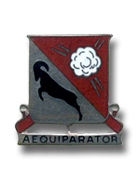 59th Field Artillery
Bn DUI
59th Field Artillery
Bn DUI |
|||||||||||||||||||||||||||||||||||||||||||||||||||||||||||||||||||||||||||||||||||||
| (Source: Email from Billy Gensmer, son of Victor Gensmer who served with the 317th Sig Bn in Pirmasens, 1953-55) | |||||||||||||||||||||||||||||||||||||||||||||||||||||||||||||||||||||||||||||||||||||
| Click here to see Victor Gensmer's photos of the 317th Sig Bn (Const). | |||||||||||||||||||||||||||||||||||||||||||||||||||||||||||||||||||||||||||||||||||||
|
|||||||||||||||||||||||||||||||||||||||||||||||||||||||||||||||||||||||||||||||||||||
| (Souce: 59th Field Artillery Bn, Pirmasens, Germany, printed by Voro-Druckerei Robert Vogel, Pirmasens, probably 1956) | |||||||||||||||||||||||||||||||||||||||||||||||||||||||||||||||||||||||||||||||||||||
|
|||||||||||||||||||||||||||||||||||||||||||||||||||||||||||||||||||||||||||||||||||||
|
|
|||||||||||||||||||||||||||||||||||||||||||||||||||||||||||||||||||||||||||||||||||||
| 1956 | |||||||||||||||||||||||||||||||||||||||||||||||||||||||||||||||||||||||||||||||||||||
| (Source: Email from Elsworth Walker, 59th FA Bn, July 1956 - 1957) | |||||||||||||||||||||||||||||||||||||||||||||||||||||||||||||||||||||||||||||||||||||
| 59th Field
Artillery Battalion, 280mm Cannon (Atomic)
42nd Field Artillery Group 7th Army (Seven Steps To Hell) NATO, European Theater of Operation, West Germany Arriving in Europe We disembarked from the troopship USNS Taylor, at noon, Sunday, 22 July 1956. Stood formation until people were sorted out for troop trains. Trains were going to France, Italy, Berlin and all over Germany. Rode all night through Germany sitting up. The train would stop every so often and let troops off. We would have a little time to buy something to eat at a vendor. Finally got to Pirmasens, Germany, which was located in the southwest of Germany, near the French border. This was wine and grape country. A jeep met me and we went to D'Isly Kaserne, home of the 59th Field Artillery Battalion, 42nd F.A. Group. I was assigned to Battery "C." I was bunked in a squad room that slept six, which was on the third floor of a former German army hospital. Barracks were stucco covered and painted white. As Battalion was on a live fire NATO training at Grafenwöhr, Germany, I had a several days to sew on the 7th Army patches and get clothing washed and shaped up. Also had indoctrination on the 59th's mission and history. Learned that the 59th held the "Santa Barbara Award" (the Patron Saint of Artillery) for firing highest score at live fire at the Vilseck, Germany, range. I went on duty with the 59th which was one of six artillery battalions assigned to the 42 Field Artillery Group and was part of the 7th Army (Seven Steps To Hell). One atomic shell had same power as bomb dropped on Hiroshima. I soon learned this was a "Gung Ho" unit. Uniforms starched and ironed. (Engineers were sloppy and equipment dirty.) All equipment was kept top notch, in the 59th. The Battalion had 415 cannoneers assigned. Three 280 M.M. cannons, named "Cool Cat," "Bugs Bunny," and "Sad Sack" were the pride of the 59th. One cannon belonged to each Battery: "A," "B" and "C." Also, there were Headquarters and Service Battery, Medical Detachment and Aviation Spotter Unit. Battalion had a German barber (Joe) and some civilian KP's, they even went to the field with us. So much money was taken out of our pay each month for their salary. We also supported a Childrens Home with new shoes and toys. Our laundry went to a Germany company and came back starched and pressed. Also a German did tailor work. So you can see the military was doing a lot to support the economy. Cannoneer Boogie I settled into battery as a stranger to artillery as engineers had a different mission. "C" Battery gun Sgt. went on leave after NATO live fire exercise, so I was put in as section leader for two weeks. Battery commander Captain Keys would not listen when I told him I knew nothing about artillery. He said: "Just do cannoneer boggie for two weeks." I sure didn't know what that was. The crew didn't approve of me as I was still "pissing state side water and was a dud," as they stated. So we cleaned and painted cannon, "cannoneer boggie," as this was called. I was glad to get reassigned to Maintenance Section. After Velz-Velz come at me with his bayonet knife - he had been sitting on a foot locker shining it when I stepped on the toe of his spit shined boots - I figured I'd better get my hat. Maintenance Section I talked to Lt. Gibbson, Motor Officer, about getting assigned to Maintenance Section. I was assigned as section leader on engineer equipment. I had four PFC's and two SP-3's in my section. Also I was signed for 5-ton tractor and 40-foot low bed trailer, which hauled D-7 tractor crawler. As section leader I reported to Sgt. Edwards, Motor N.C.O. Also was assistant wrecker operator. My section also had three gun generators on trailers and three air compressors on back of 2½ ton trucks, also shop truck and jeep with trailer for parts and mail pick up. Also had a 5-ton wrecker. Guard Duty I also was corporal of the guard. Here we carried loaded rifles, with one up the pipe. We had been put on alert as "Intel" got wind of a communist plot to blow up a gun. We were just a few miles from the French border, who had a lot of communists. Also, the town of Finton (sp?) was only about 5 k's away and was a "Communist" town. I think back of when we would road test vehicles and drive through Finton, just looking for trouble. Any way my buddy rider opened his jeep door and knocked a comrade off his bicycle. Guard post #5 was at our ammo dump. The post was several k's from the Kaserne. A 24 hour guard shift was required. We had a guard shack, with bunks and a heating stove. One hot meal a day was brought out. The rest of meals were C-rations. We did get a good supply of bread and butter. Made toast on top of stove. Anyway an old German would come by with a youngster, we would give him extra bread and some C-rations. He was always very grateful. Civil Affairs Projects I worked on some (Civil Affairs) projects for the Germans. I used the D-7 tractor to knock down a bombed out factory. Pulling the smokestack down was a job. Steeple jack had climbed to the top of stack to attach a cable, which broke on the first pull. He would not climb the stack again so we pulled the bottom out. Stack tipped over and almost got me on the tractor. I graded a sportsplatz (sports field), also repaired roads. The D-7 bulldozer was used mainly for digging gun pits on live fire maneuvers. Was also useful for pulling stuck T-10's and cannon out of the mud. Road Marches The 59th spent a lot of the time in the field either on live fire, NATO games, or command exercises (CPX). The 280's were a reaffirming sight and flag bearer as the Navy battle ship was at one time. My first winter found fog, cold not much snow. Our field trips would turn into a muddy mess. Also, either had German people cheering us or dumping their pots on the convoys. The streets were narrow and we'd be awful close to those second story windows, in the early morning. The narrow streets were nice when passing through a town. Someone would "break down" and block the road. Guys would jump out and run into a Gausthaus and by a liter of beer and food. On one of our road marches a five ton driver hit an oxen carts and killed the oxen and frau. The comrade wasn't concerned about his wife getting killed. He said "he could always get a new one." He just wanted to be paid for oxen and cart. Maintenance Section had a large tent, used for working on vehicles; this became our home, in the field. We had sleeping bags and a "John Brown," heater which would run out of fuel during the night and no one wanted to get up and start it. Alerts We had many alerts, this meant loading up all equipment and be ready for road march in two hours. Sometimes we'd get an alert in the middle of the night, get all loaded up and there would be a stand down, or head out. One night in Oct. 1956 we got an alert and no stand down. The convoy headed southeast and kept going. At the first break rumors were starting we were going to Austria, at the next break we had "not Rounds" Atomic warheads, from the blue room. "Mr. Peepers," radioman, was in contact with 42nd Group, 7th Army and was passing news, against regulations. We knew later in the day that there was a revolt in Hungary against the Communists and the rumor was that Russia was invading, which they were. As things turned out, Russia assured the US that they only were interested in Hungary not anyplace else. The President backed down so we turned around and went home. So the cold war lasted another 35 years. We wanted to nuke a few comrades. War Hawk Spring mud, fog, snow and rain found the 59th on "Operation War Hawk," a NATO field exercise. 250,000 NATO Allies - Americans plus British, Canadians, French, Turks, Italians and many more countries. Any way we were all together playing games so someday we might stop the hoards from East. We live fired cannons for 12 hrs only stopping to clean the tube. Three guns firing and concussion almost drove you nuts. All canvas on vehicle had to be rolled up and all windows open, or they would blow out. My job was to help wheel up powder bags for C battery's gun. We had to fire all old rounds, as they were six months old. Every country had different vehicles, ammo, field equipment. I don't know how we would have won any war. Our support unit on "War Hawk," was a cavalry unit with the 82nd Airborne Division. We watched them jump and drop equipment. A jeep was wrecked on drop. A 75mm gun went barrel first into the ground. Airdrop includes Quad. Fifty Cal. machine guns on small track vehicles. Jeeps with 75mm guns, small tanks. We were "straight legs," to them. They were all crazy and liked to pull jokes on us. Their favorite was to sneak up behind you, in the chow line and stick a blank bullet in your open rifle chamber, which was at sling arms; snap it shut and pull the trigger. We soon kept chambers shut, against regulations. In the second week my section was assigned to guard ammo trucks, several k's away from the firing batteries. We got bored on our assignment guarding the 5 ton ammo (280mm rounds) trucks, which were in a rock quarry. So did some trading with a German who worked there. We traded, three Jerry cans of 15 gals of gas and some cigarettes for a couple cases of beer (liters), wurst and hard bread. We ate well for three days, which made up for sleeping on the ground, in sleeping bags. We also "liberated" extra boxes of C and K rations when we went to mess tent, for our one prepared meal a day. Anyway on the weekend we handed out cans, boxes and cigarettes to the Germans. They always went for a walk on Sundays. The cigarettes were like straw but they liked them. After two weeks we went back to the post. I was lucky, as I had been back to pick up parts and mail, so took a shower there. Otherwise none for two weeks, some did go to a radar station, AF, for a shower and a movie. Paris, France I left for Paris on a week's leave. Found the French not too friendly. Paris was dirty, didn't impress me. I saw all the sights. TDY U.S. Army Engineer School Shortly thereafter, I got orders to go to Murnau, Germany for refresher course on the D-7 crawler. I left by train and changed at Munich. This is where I run into my "Airborne friends." My uniform was bloused boots, "they told me to on blouse them, as only airborne could wear bloused boots." I did so as they ment business. When I got back on the train, I bloused them again. As I had all my field equipment, duffel bag and rifle I didn't dare sleep. Then I had three comrades, one with an arm missing, starring me down and talking about me. They kept eyeing my rifle. As I had it broke down and some parts in my duffel bag. I was sure they wouldn't get it. I took my bayonet and put it on my lap and put duffel bag strap through my belt. Anyway when they got off the train I was relieved. After that I fell asleep and missed my stop at Murnau. The car was unhooked and a comrade was sweeping the floor. He must have been afraid to wake me up. I asked him about Murnau and he pointed to a train going back, which I jumped on. No one asked me for a ticket or got too close. So with that I was at Murnau. The Engineer School was housed in Barvarian style buildings with murals painted on them. Engineer classes were from Monday through Friday with weekends free. Every weekend I went on a different U.S.O. tour. I went to the Garmish ski area and Switzerland. Next weekend to Munich and visited castles, next weekend to Salzburg, Austria, Castles and "Eagles Nest". A German made our beds, shined our shoes and other chores, we paid him in carton's of cigarettes, per week, which he went out and sold on the black market. A carton cost us $1.00 and a ration coupon; he could sell them for 20 marks or $5.00, on the German economy. First two weeks were classroom. Second two weeks we did civil action projects for the Germans. Such as moving rock, grading and smoothing out road beds. Germans that were worked for in southern Germany were friendlier and gave us, beer and schnapps. 59th to Gyroscope back to States April 1957: the 59th received orders that they would "Gyroscope," whole unit would go back to Fort Jackson, S.C. and be deactivated. Missiles were going to replace the cannons. I volunteered to stay in Germany. I had less than a year to do in the army and did want to do the time in the States, as filler. Also wanted to go to some other countries. I received orders to report to the 559th Field Artillery Missile (Corporal), Atomic. I can't leave the 59th without remembering Battery Commander Captain Keys. He was a Mustang (former enlisted man), Airborne during WWII, infantry in Korea, battlefield commission. Was tough as nails on us. He liked to take the battery out and double time us for a couple miles, about every week. As he had to go for a medical check-up one week he sent a Second "Lewie" out to run us. We ran him until he was in the ditch puking. Click here to proceed to Elsworth's recollections of the 559th FAM Bn. Email to Elsworth Walker |
|||||||||||||||||||||||||||||||||||||||||||||||||||||||||||||||||||||||||||||||||||||
|
|
|||||||||||||||||||||||||||||||||||||||||||||||||||||||||||||||||||||||||||||||||||||
| 264th FA Bn (280mm Gun) - 3rd Gun Bn, 82nd Arty | |||||||||||||||||||||||||||||||||||||||||||||||||||||||||||||||||||||||||||||||||||||
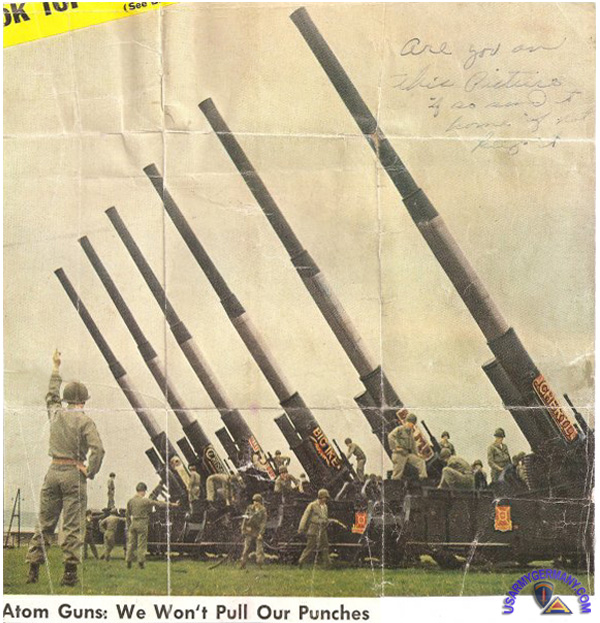 All the Big Guns - COMANCHE, BIG MO, BIG IKE, APACHE, ALLEY OOP and CHERYL
(the name of the BN CO's daughter) on the cover of the ARMY TIMES (Franklyn Paugh) |
|||||||||||||||||||||||||||||||||||||||||||||||||||||||||||||||||||||||||||||||||||||
| (Souce: Email from Lisa Speer whose father served with the 264th FA Battalion in the mid-1950s) | |||||||||||||||||||||||||||||||||||||||||||||||||||||||||||||||||||||||||||||||||||||
| Love your page! Lots of great information. Small correction -- while this might also have been on the cover of ARMY TIMES, the image above is from the January 3, 1955, cover of Newsweek. The chief of section (man with back to camera) is my dad, Sergeant Clyde Speer. |
|||||||||||||||||||||||||||||||||||||||||||||||||||||||||||||||||||||||||||||||||||||
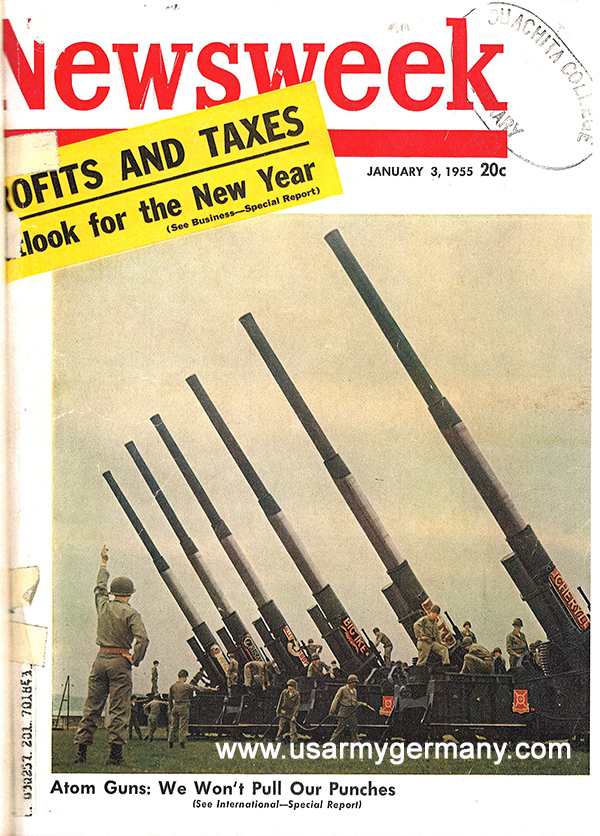 Cover of the Jan 3 1955 issue of NEWSWEEK (Lisa Speer)
|
|||||||||||||||||||||||||||||||||||||||||||||||||||||||||||||||||||||||||||||||||||||
| Bad Kreuznach | |||||||||||||||||||||||||||||||||||||||||||||||||||||||||||||||||||||||||||||||||||||
| 1954 - 1958 | |||||||||||||||||||||||||||||||||||||||||||||||||||||||||||||||||||||||||||||||||||||
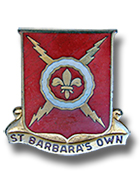 264th Field Artillery Bn DUI
264th Field Artillery Bn DUI |
|||||||||||||||||||||||||||||||||||||||||||||||||||||||||||||||||||||||||||||||||||||
| (Souce: Email
from SSG William Terry (then PFC-CPL William Terry) USA Ret, 264th
FA Bn, Fort Sill OK to Bad Kreuznach, Germany - October 1953 thru
February 1957) (Updated email: sarge7934(AT)gmail.com |
|||||||||||||||||||||||||||||||||||||||||||||||||||||||||||||||||||||||||||||||||||||
| The
Beginning I am trying to recall this from memory and please understand it has been nearly 50 years so if I err on some of the information, forgive me. I'll begin with me completing Basic Infantry Training at the Field Artillery Replacement Training Center (FARTC) at Fort Sill OK in October 1953. After completion, a direct assignment to the 264th FA Bn with two weeks leave before reporting to Battery B. My military records show I had an additional eight weeks of 155mm Long Tom gun training with the 36th FA Bn, but actually I was sent straight to the 264th for On The Job Training (OJT). The 264th was getting up to strength to Gyroscope to Germany. This is where the whole unit goes and in some cases swapped places with a unit in Germany. If this was the case with the 264th I do not know. |
|||||||||||||||||||||||||||||||||||||||||||||||||||||||||||||||||||||||||||||||||||||
|
|||||||||||||||||||||||||||||||||||||||||||||||||||||||||||||||||||||||||||||||||||||
| We were the first
inhabitants of the kaserne since the German Army. It was in sad shape.
We immediately began making it habitable and did a lot of work ourselves.
In fact we found a lot of unexploded ordnance in the ground and in
the bomb shelters in the area. Composition of the 264th The 264th was composed of three firing batteries, A, B & C and a HQ and Service Battery. Each battery had a captain as a CO, a First Sergeant and a Chief of Firing Battery. There were 2 gun platoons (sections) in each battery, commanded by a lieutenant and a SFC. Each firing section had a Section Chief (Staff Sgt) who was also the gunner and an assistant gunner and six cannoneers as I remember. Also included were an artillery mechanic (also the platoon leader's driver), 2 transporter drivers and 2 assistant drivers. We also had a counter battery radar section in the battery but I don't know the make-up of it. Of course we had the Supply Section, Motor Pool Section and had a bull dozer assigned to each battery. The battery also had a commo section and a survey section. Life in the 264th After a short stint in the FDC I asked for a transfer as I was math poor and was really out of my element. So I was transferred to a gun section as a truck driver/ammo handler. I was assigned a 5-ton ammo truck and trailer and had full responsibility for it. The trucks in the motor pool were rotated monthly with the trucks in the ammo dump that had the basic load on them and were ready to go, so maintenance could be kept up. |
|||||||||||||||||||||||||||||||||||||||||||||||||||||||||||||||||||||||||||||||||||||
|
|||||||||||||||||||||||||||||||||||||||||||||||||||||||||||||||||||||||||||||||||||||
| Military justice
was swift and sometimes severe. Small infractions (like insubordination
or screwing up in the barracks) were usually dealt with by the platoon
sergeant. He would usually just pull your pass for a couple of weeks.
For more serious infractions and you had to see the First Sergeant,
it meant Article 15, your name in the "Red Book" and loss of a stripe.
For real serious stuff and you had to see the Battery Commander, you
might as well pack your belongings in a duffle bag as you were certainly
going to the stockade in Kaiserslautern or the rehab barracks at Crailsheim
for at least thirty days. Soldiers quaked at the threat of Crailsheim
because of the extreme re-training that was done there. Every evening (except weekends) a retreat formation was held in Class A uniform at 1700 hours. The evening meal in the mess hall was in either Class A uniform or "appropriate civilian attire," which was coat and tie. This was also the requisite clothing for going on pass. We got around the tie thing by using western string ties. |
|||||||||||||||||||||||||||||||||||||||||||||||||||||||||||||||||||||||||||||||||||||
|
|||||||||||||||||||||||||||||||||||||||||||||||||||||||||||||||||||||||||||||||||||||
| Before going
on duty the guards were inspected by the officer of the day and was
quizzed on General Orders and Special Orders and evaluated for sharpness
of person and uniform and weapon. The one picked for orderly got 24
hours off, other than making the bed for Staff Duty Officer. If picked
three times in a month, he got a three day pass and off the duty roster
for a month. That was a great deal. We really prepared for that too.
Khaki's were highly starched and there were people that had someone
hold their trousers and two more insert the person into the trousers
so as not to break the crease. OD (wool) trousers sometimes had tinfoil
sewed into the legs to make sharp creases and were never cleaned to
make them stiffer. Corcoran jump boots were highly prized and remember,
this was the "brown shoe" Army and the boots were shined to a glaze.
The owners walked flat-footed so as to not break the polish in the
creases on the boots. Only 15% of the unit was allowed out on pass during off duty hours. Overnight passes were allowed but only on Saturday nights. Week night curfews were 2300 hours and Saturday 2400 hours. You had to be off the street between those hours and 0600. I loved to go to Wiesbaden as it was an Air Force town and they didn't enforce the curfews plus they had great places to go. One was the Eagle Club which is now a luxurious casino. Another favorite place to go was Bingen and Ruedesheim on the Rhine River. I still go there when I go to Germany. We trained quite heavily and my platoon had the best platoon in Germany so we were selected to go all over Germany and demonstrate the Atomic Cannon. Until I left Germany my platoon held the best emplacement time for the gun. From the time the command "Prepare for action" until we announced "On the way" (the shell had been fired) was 7 minutes flat. Of course we did some highly unauthorized shortcuts, like literally dropping the gun from the transporters, but it worked for us. We got some great TDY from it. |
|||||||||||||||||||||||||||||||||||||||||||||||||||||||||||||||||||||||||||||||||||||
|
|||||||||||||||||||||||||||||||||||||||||||||||||||||||||||||||||||||||||||||||||||||
| On one trip back
from Graf, one of the guns lost an air hose (the throttle and brakes
of the rear transporter were controlled by the front transporter by
air hose connections), there by losing all air pressure and thusly
the brakes. It was a long steep incline and the drivers had been warned
to use low gear going down. Our drivers didn't and needless to say,
the gun reached about 80 MPH going down. Luckily the autobahn is wide
and relatively straight so the gun made it to the bottom without incident.
At that time I was driving the platoon leader's jeep, which always
preceded the gun with red lights and siren. I saw the gun was in trouble
and was bearing down on me (my jeep would only go about 60 MPH) so
I got out of the way. My 2d LT told the transporter drivers if he
had known they were in trouble he would have stayed in front of them
with the light and siren. That instantly reinforced my opinion that
all new 2d LTs were nuts. Another year one of the ammo 5-ton trucks had a transmission explode going down the same place on the autobahn and it lost the air brakes as well as the power steering. The driver managed to get the truck safely to the bottom of the mountain, got out of the truck and fainted. For good reason as the truck (and trailer) was loaded with 280mm shells and powder as well as small arms ammo. We did a lot of maneuvers in the Black Forest and I mean it is black there at night. And of course we were total blackout conditions. Lots of nights the only way to find the area was by the sound of the generators. When reading General Colin Powell's autobiography, he mentioned that as an Infantry 2d LT, his platoon had done perimeter security for a 280mm gun outfit. I wondered if it might have been ours. We always had an Infantry Company, an anti-aircraft battery and sometimes a tank platoon attached to or with us. In B Battery we had a great, alcoholic cook/baker that was in his element cooking on the field stoves and always made biscuits and cinnamon rolls for us in the field. He always made enough for the Infantry guys and they really appreciated it, as their meals were usually WWII C-rations. Once the military police chased our bull dozer transporter into the motor pool because he wouldn't stop for them. As he tried to leave the kaserne the battalion exec wrote the MP up for entering a restricted area without a pass and speeding in the motor pool. Which brings up another story or two. The troops at the 2nd Armored Division up the street really resented us. Can't say I blame them too much. The 264th FA Bn was a very close knit unit and we stood up for each other. So we virtually took over Bad Kreuznach when we arrived. Consequently there were hard feelings between us, especially us and the MP's. Our Battalion Commander, LTC O.B. Lawrence had said that if we got back to the kaserne we were home free. Many nights we outran the MPs home. The Rose Barracks kaserne was on the way to our training area on Kuhberg Hill. At 1700, the gate MP's at Rose Barracks would bring a little stool to the middle of the street at the entrance gate to direct traffic. Our transporter drivers would see how close they could come to the MP on the stool. Remember the 280 gun in traveling mode was about 85 feet long and 12 feet wide. The MP's would see us coming and would jump off the box and drag it back into the kaserne. We thought this was hilarious. I went through most of the jobs in the gun section. Ammo section and truck driver, cannoneer, assistant gunner, gunner and finally as artillery mechanic. I was responsible for all the maintenance on the gun and drove the platoon leaders jeep. I was also trained in assembling the nuclear round. I was a corporal when the military came out with the specialist ratings and changed to SP3 which later was SP4. This was in 1956 I believe when they created the E8 and E9 grades. I attended the 7th Army NCO Academy in Munich in 1956 and graduated with honors. That was a surprise to me. You were allowed only 20 demerits during the whole one month course and I got 10 my first week. If you got the 20 you were returned to your unit with recommendation for a one paygrade reduction. I left Germany in February 1957 and was assigned to the 3rd Missile Command, and Honest John missile unit at Fort Bragg, NC, as a nuclear weapons assembly specialist. ADDITIONAL INFORMATION The photos below are of Big Ike II. Big Ike I was at Fort Sill. "A" Battery had the original Atomic Annie, if I remember correctly. Back in those days the names had to begin with the 1st letter of the battery; so, everything in "B" Battery had to start with a B; in C Battery a name for a gun had to start with a C. For the life of me I cannot remember what the 2d gun section's gun was named. It'll probably come to me later. |
|||||||||||||||||||||||||||||||||||||||||||||||||||||||||||||||||||||||||||||||||||||
|
|||||||||||||||||||||||||||||||||||||||||||||||||||||||||||||||||||||||||||||||||||||
|
|
|||||||||||||||||||||||||||||||||||||||||||||||||||||||||||||||||||||||||||||||||||||
| 1954 | |||||||||||||||||||||||||||||||||||||||||||||||||||||||||||||||||||||||||||||||||||||
| (Source: Email from Charlie Hedgpeth sent to Terry W. Colvin, member of the Yahoo Group "CommCenter-1") | |||||||||||||||||||||||||||||||||||||||||||||||||||||||||||||||||||||||||||||||||||||
| I was a commo sgt in the 264th Field Arty Bn - Atomic Gun, as it was known back in 1954 - 57. Oddly enough I had among other equipment, the same two major items of comm equipment that the 229th Sig Co (OPNS) had back in 1950 in Korea. We had one AN/GRC-26 RTT/CW/FAX rig with updated receiver equipment by Collins and a Transmitter (BC-610) which looked like a better built unit than the one in Korea. Don't know who built the Xmtr but there was a metal tag attached to the rear of the Xmtr frame that read "U.S. Army Sig Corps etc.,etc. The other item was an old WW 2 SCR-399 Voice/CW Rig. As for a Com-Cen, we didn't have one. Any printed messages to us came in at the S2-3 shop at Bn Hq or over our RTT. Routine traffic could be delivered to us by the 2nd Armor Div which was just up the road (a 3-min walk) from us (Webmaster note: HQ 2nd AD was at Rose Barracks, Bad Kreuznach. The 264th was at Des Gouttes (later renamed Minick) Kaserne, Bad Kreuznach.) Battery A had one TT circuit in the basement of their barracks which was highly "Off Limits" . There was two CQ type armed guards there at all times. Being in Hq and Svc Btry of the 264th had its good points compared to A, B, or C Btrys except four of us SSG were split duty for operations as related to "assembly" should the time ever come when we had other than a friendly "Handy-cap Black" alert (practice). Not much else to say. Foot note: Other comm equip in use there consisted of WW-2 stuff. SCR-506 HF rig so we could talk to the Armor folks. Had lots of PRC-6 and PRC-10 hand held radios. Everyone had EE-8 crank telephones which would tie into the new SB-22 field switchboards. Almost forgot to mention the fairly new AN/Tipsy Dog Radars (Webmaster note: AN/TPS-1D) in HHC. Had two of them. And last but not to be forgotten: AN/GRC-9 Voice/CW Back Radios and the (at the time) AN/GRC-25 Radio. Best Charlie Hedgpeth |
|||||||||||||||||||||||||||||||||||||||||||||||||||||||||||||||||||||||||||||||||||||
| 1955 | |||||||||||||||||||||||||||||||||||||||||||||||||||||||||||||||||||||||||||||||||||||
| (Source: Email from Franklyn Paugh, 264th FA Bn, 1955-56) | |||||||||||||||||||||||||||||||||||||||||||||||||||||||||||||||||||||||||||||||||||||
| MY ARMY EXPERIENCE
After graduating from high school in 1951 and registering for the draft, I received a college deferment and went off to the University of Illinois. After a couple of years it dawned on me that I would have to serve my two years with Uncle Sam when I was done with school. Since going to school and working to pay for it was a drag I figured that if I went in to the Army, Uncle Sam would pay for my college. The fact that Congress was thinking of ending the GI Bill (still hasn’t happened) I returned my deferment and volunteered for the draft. I was drafted and entered the US Army November 1, 1954. I was sent to Camp (now Fort) Chaffee for my eight weeks of basic training. I received orders to return to Camp Chaffee for Artillery training after the normal week off. After a couple of days back, the men I was serving with and myself figured something was going on. Most every one in the unit had at least two years of college and we were treated a little nicer that we expected. At the end of the eight weeks a high percentage of the troops were assigned to the 264th FA Btl in Bad Kreuznach, Germany. The trip to Germany was an experience. We were moved to New York by train and loaded onto the USS Callan along with a lot of other troops. I lucked out and was given KP duty, which I didn’t like at first. The galley crew quickly informed me to never miss a meal and to eat all the time. I was allowed to go into the kitchen anytime 24/7 and get food. I realized why when we hit a storm in the North Atlantic and spent three days at sea anchor during which time we were feeding 85 troops that could still eat. Arriving at the 264th in Bad Kreuznach I started one of the best experience and times of my life. The B Battery commander was 1st Lieutenant “Flash” Gardner, a man who received a battlefield commission in Korea and still had the enlisted man at heart. During my time there he received his Captain’s bars. |
|||||||||||||||||||||||||||||||||||||||||||||||||||||||||||||||||||||||||||||||||||||
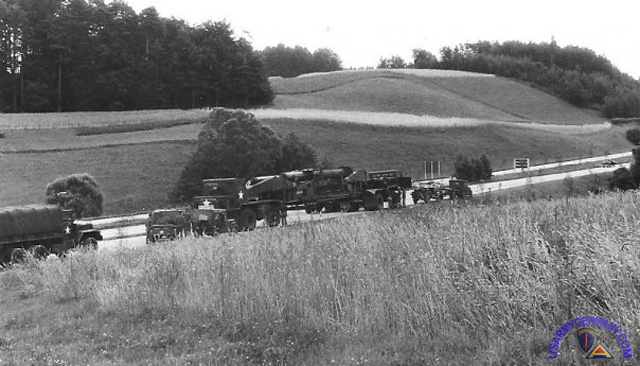 |
|||||||||||||||||||||||||||||||||||||||||||||||||||||||||||||||||||||||||||||||||||||
My first assignment was in the radar group, which didn’t last very long. Since diodes and chips were not available, the Q-10 radar set operated on vacuum tubes. Every time it was moved, it took hours to get it up and running again. Within the first couple of weeks the outfit went to the field for training for a week. Since I had been there such a short time, I didn’t know where we went to train. It was some kind of Battery test so the radar crew was given a truck load of C rations and stuck in a remote site away from the rest of the unit. This happened in March in Germany which can be and was quite cold. When I woke up in my sleeping bag the first morning a fire had been started and all our boots were around the fire getting warm. Wondering who had done this, I was surprised to find a 12 year old Polish boy had done it. It seems there was a DP camp over the hill from our position. We were not the first unit he had befriended. What he wanted was all the discards from the C rations which the GIs usually had. He was there everyday for our stay doing jobs for us. I have often wondered how that boy turned out, since at the age of twelve he spoke fluent Polish, English, German, and French. Oh by the way, when we left, quite a number of C ration cases just happened to fall of the back of the truck. When we returned to Bad Kreuznach I was called to the Battery Commanders office. This usually creates fear and I was no exception. However, it was to inform me I was now in the survey section. It seems they needed to replace the man who did the calculations during the surveys and the review of my schooling made me their choice. I was introduced to my new Sgt. who had been a college math instructor but drank too much and ended up in the Army. We got along great with my math background. My other assignment in the section was to drive the Lt’s jeep. This gave me the envious position of sitting in the jeep while the other men pulled the measuring chains and recorded the angles. I was afforded a wonderful chance to see Germany from the inside. We were assigned the task of burying trig marks (a piece of rebar in concrete) in the intersections of all the dirt roads in our part of Germany. The Lt. then put it in a classified record for use if hostilities broke out. To fire a 280mm cannon the exact quadrants of the gun were required by FDC. By having this record the gun could go to a known position and not have to wait for a survey. Driving the jeep for the Lt also created a memorable moment. Besides being in charge of the survey crew he was also the FO when we fired the guns. We had gone to Grafenveer to fire the guns; we couldn’t go to Baumhilder because the range was not long enough, and so we drove to the FO cement bunker on the range to observe the firing. When we got there a French unit with about a dozen 20mm cannons were shooting at a wooden tower with a bunch of what looked like Generals with BC scopes watching the results. They paid little attention to a couple of GIs showing up. Of course we couldn’t pass up a chance like this, after establishing contact with FDC we asked if they could hit the tower. Their response was which corner. After receiving the “on the way” and “splash” we watched the French. When the wooden tower turned into toothpicks it took about three minutes for the French Army to disappear. Like most Army units, sports was a big part of off hours. I played on the B battery basketball team, touch football team, and fast pitch softball team. The best was the softball team, we had two very good pitchers, one was a man named Moses and the other was Captain Gardner. At the end of the 1956 season we had won enough to get into the 7th Army tournament. Our problem was Moses had rotated to the US so we were down to one pitcher, Capt. Gardner. Why his arm did not fall off is amazing, he pitched 6 games in five days. We went all the way to the championship game which we lost 2 to 0. That probably was a good thing because the winning team got a trip to the US to participate in the all army tournament. If we had won, the team would be in a fix because a lot of us would be out of the service before the tournament was played. I rotated home and was discharged October 11, 1956. I returned to the University of Illinois and let Uncle Sam pay for my degree in Mechanical Engineering. Enough about me lets talk about the 264th FA Battalion. As you can see from the pictures I sent, the Guns were named Apache and Alley Oop in A Battery, Big Ike and Big Mo in B Battery, and Comanche and Cheryl in C Battery. Bet you can’t guess the name of the Battalion Commanders daughter. Shortly after I was there, orders came down to remove the names from the guns, so they were painted over. Hopefully the pictures I have attached are self explanatory. There are pictures of convoys, survey crew at work, trips to London, Paris and Amsterdam, scenes of Germany during our surveying, and of BK. |
|||||||||||||||||||||||||||||||||||||||||||||||||||||||||||||||||||||||||||||||||||||
|
|||||||||||||||||||||||||||||||||||||||||||||||||||||||||||||||||||||||||||||||||||||
| 1956 | |||||||||||||||||||||||||||||||||||||||||||||||||||||||||||||||||||||||||||||||||||||
| (Source: Email from Jim Lancina) | |||||||||||||||||||||||||||||||||||||||||||||||||||||||||||||||||||||||||||||||||||||
| I just finished reading the articles on the 264th FA Bn. I was transferred from the recently arrived 8th Infantry Division in November 1956 -- a long cold journey from Heilbron to Bad Kreuznach in the back of a Deuce and a Half. I was assigned to the Medical Detachment for a bout two years. The 264th had just lost a lot of men, it might have been the so-called "Dumbbell" transfer. I remember hearing about it, but I can't remember if that took place before, or after, I was transferred. I guess when the 264 lost so many men, and the 8th Inf. was asked to help refill the ranks, they took the opportunity to get rid of some of their eight balls. I know I was an RA with a US attitude, but mostly kept in line, because of the very real threat of being sent to Crailsheim (Webmaster note: this was the USAREUR Rehabilitation Center at the time) and the great number of 208s that were sent home. I guess the Army was a different place then than it is now. With the exception of the 280mm's and the T-10s that hauled them, most of our equipment was the stuff you see on the later newsreels from WW II. I was at a 4th of July celebration recently where there was an Army exhibit. The only piece of equipment I could recognize was a .50 caliber. But also, with the draft, there was a whole cross section of American youth. It was the first time many of us met people from other states. There were good soldiers and bad soldiers, officers, NCOs, and EMs. Unfortunately, race relations weren't always good. In Bad Kreuznach there were two sets of GI hangouts. I can't remember their names anymore, but we didn't mix much except in the Kaserne and on maneuvers. Once out in the field, we had a small battery race riot that was put down by the guard mount with the simple act of a butt stroke to the back of the head of a barracks lawyer who didn't know when to shut up. But I will say this: it was the first time I had been around boys and men of different races, and I will always be greatful for that. It stopped short those casual attitudes I'd been raised around. The Medical Detachment consisted of an MD, two SFCs, and, I think, six medics. We held sick bay every morning, handed out APCs (because they were so good for everything), ETH with Codeine for coughs. What we liked most was giving shots, for it was there, we were able to get even with impunity. When we went to the field, we sat around in the ambulance messing around and waiting for someone to get hurt. When we went to the field for firing, it was for about thirty days. At first we went to Baumholder and Grafenwoehr. Later, we went only to Grafenwoehr/Vilseck, where, so they said, we were so close to the border of the Iron Curtain, we could hear the Czech guns firing. I don't know if that was true, or not, but years later, I met a fellow who was in the Bulgarian Army at that time, and in that area. From what he told me, those boys behaved the same ways we did. Going down south took most of the day. I remember driving through Darmstadt and Munich. I also remember seeing Gary Crosby at the PX there. He was stationed somewhere in Germany at that time. I also remember that it was a rare even tto have all six guns arrive when they were supposed to. They always seemed to be breaking down. I think, one time, only one of them arrived. They were awkward things, hard to maneuver through the narrow streets of Germany. The last year, I transferred to C Battery as a cannoneer. I learned the "Boogie" as no. 2 man. My responsibility was to help get the cannon unhooked from the T-10s, climb up on the piece, open the breech, fold the tray down, screw the fuse in the round, close the breach, fold the tray, and get out of the way. On one fire mission, I remember we were pointed 180 degrees in the wrong direction. I thought Bad Kreuznach was a nice town for passes. In the summer time particularly we could rent boats on the Nahe River, walk to the schwimmbad in that little town beneath the ruined tower of Rheingraffenstein, and, on a Saturday night, or two, jump off the bridge downtown and try to get away from the MPs. We'd also get aboard the red schnellzug for a quick trip to Bingen, then across the Rhine on the ferry to Ruedesheim. I visited Rudesheim last year and recognized nothing except the Watch on the Rhine statue above the town. Even that was smaller than I remembered. I was sorry when we moved to Geissen, but it wasn't a bad place to be. Reading Sgt Terry's article (whom I seem to remember and can put a face to him), I was pleased to be reminded of people whose names I remember. I couldn't put faces to the names, but there are some whom I remember well. The first was our C Battery, Sgt Dominie, who was one of the best soldiers I knew in the Army. What I liked so much about him was that when you were in the wrong, he ran all over you, but when you weren't, he let you alone. The 1st Sgt who followed him was my first gun section chief (as I write this I've lost his name) was the same kind. Then there was Sgt Sisk who saluted with a bent wrist. I thought it looked cool and tried it once-only once. There was Sgt Leone, my last section chief, who split his pants during PT one day. I was sorry when they changed the unit's designation from the 264th to 3rd Gun Bn., but I was a short timer. I left in February 1959, still a PFC. |
|||||||||||||||||||||||||||||||||||||||||||||||||||||||||||||||||||||||||||||||||||||
|
|||||||||||||||||||||||||||||||||||||||||||||||||||||||||||||||||||||||||||||||||||||
| 1957 | |||||||||||||||||||||||||||||||||||||||||||||||||||||||||||||||||||||||||||||||||||||
| (Source: Email from Rev. Robert Reid) | |||||||||||||||||||||||||||||||||||||||||||||||||||||||||||||||||||||||||||||||||||||
| I was assigned to the 264th FA Battalion on April 12, 1957. I served with the 264th at
Bad Kreuznach until late June of 1959 when I returned to states for
discharge. The 264th was redesignated 3rd Bn, 82nd Artillery in June of 1958. We were moved north to Giessen, Germany and initially the whole bn was based at Rivers Barracks. After a few months, due to cramped space, HH&S and A Batteries were moved to the QM Depot in Giessen across town. B & C Batteries remained at Rivers Barracks where they shared the post with the 594th FA Bn and the 93rd Engineer Bn. The 594th was a 8" self propelled unit. Enjoyed seeing the photos of Bad Kreuznach post. I lived in building in the first photo. I do not recall in my time in Germany of our being assigned to any artillery group. I was always under the impression that we were just part of V Corps. I was personnel clerk in HH&S. I cut orders for the Bn. and also arranged port calls for the troops going home. I also typed the morning reports that had to be done every morning by 9 a.m. While we were at Bad Krueznach, around the spring of 1958, we shipped home for discharge, individuals that were not high school graduates. We referred to this as the "dumb bell" discharge. We sent home a couple hundred, mostly canoneers from the gun batteries. One of my favorite tasks was sending home the disliked officers by boat. In those days about sixty percent of the troops had to cross the Atlantic on troop ships. I was in the vantage point of being able to arrange the mode of travel. Top notch commanders were assured of my getting them an air port call through Frankfurt. The ones that were known to be hard-nose rank pullers I would let my friends in 7th Army headquarters know that I thought this or that officer would make a fine troop ship officer on the 10 day trip on the Atlantic. I had a few arrogant 1st Lts. that tried to go over me and get their port calls changed so that they would fly home. I had a tight connection in Stuttgardt and even the call of my Lt.Col. C.O. couldn't get their transporation changed. As a result of my job, I would get a little more in the chow line. The cooks knew to take care of me. I remember when I would go through the chow lines at mess, a seasoned cook would always tell the new cooks to take care of me in the chow line and I would take care of them when it came to "flying" home. |
|||||||||||||||||||||||||||||||||||||||||||||||||||||||||||||||||||||||||||||||||||||
| Giessen | |||||||||||||||||||||||||||||||||||||||||||||||||||||||||||||||||||||||||||||||||||||
| 1958 | |||||||||||||||||||||||||||||||||||||||||||||||||||||||||||||||||||||||||||||||||||||
| (Source: Email from William Whittaker) | |||||||||||||||||||||||||||||||||||||||||||||||||||||||||||||||||||||||||||||||||||||
| The day after my 18th birthday in 1957, I volunteered for the draft and was inducted Nov. 12. After 2 months of Basic at Fort Dix I trained as a cannoneer at Camp Chaffee in Fort Smith Ark. I shipped to Germany in April 1958 aboard the MSTS Alexander Patch. I was one of 300 casual troops aboard with about 2000 3rd Inftry Div. troops who were rotating to Germany. I got on a troop train at Bremerhaven and was dumped off at 6 in the morning in Giessen to join A Battery of the 264th FA Battalion, St. Barbara’s Own, stationed at the Quartermaster Depot. (St.Barbara is the patron saint of artillery men.) The 264th was in Vilseck (a firing range near Grafenwehr) for a month. After a few days of hanging around I got a ride on the mail truck out to the field and joined the battery. I was assigned to FDC. The first 2 weeks with the section I just watched and got to know the battery. When we got back to Giessen I began to learn my job. Because I could add and subtract very fast I was assigned to FDC and became a computer (I did not realize it at the time but in high school I had a part time and summer job working in a fruit and vegetable market and I had to bag, weigh and add up all the customers costs on a brown paper bag while they were yelling at me and making sure I wasn’t cheating them. There was lots of noise and confusion so I was very comfortable when I got inside the FDC van.) (Webmaster Note: 264th FA Bn (280mm Gun) was redesignated as 3rd Gun Bn, 82nd Arty on 1 June 1958.) |
|||||||||||||||||||||||||||||||||||||||||||||||||||||||||||||||||||||||||||||||||||||
|
|||||||||||||||||||||||||||||||||||||||||||||||||||||||||||||||||||||||||||||||||||||
We generally woke up to “Hill Billy Reveille" on AFN radio. Their 6:30 signoff was: “If the good Lord’s willing and the creeks don’t rise, we'll see you in the morning at 6:05." Life was routine and good. We had a great little dining room where we started off each day with eggs to order and copies of the Stars and Stripes. Because we all bought US Savings Bonds, which made the CO look good, we did not have to stand reville. Our first formation was 7:30 instead of 6. This was important for the married troops who lived off base because it gave them an extra hour and a half in the AM. There was a lot of pressure to “Buy Bonds.” Until I figured it out, I thought it was strange that so many people were concerned about my savings plans. Turned out I used those bonds to pay for my first 2 years of college when I was discharged. I remember our cooks: Mack Lingo, Watson, Greb and The Chief. We paid $7 a month for KP and these guys hired Germans who did it for us. The KP’S even came into the field with us. At least 2 cooks married the women KP’s. After 1st formation we had about a half hour to do section chores. FDC cleaned the showers and sinks. Other sections cleaned the toilets, others swept the halls and cleaned the common rooms. We were shaped up by 8 am. We then did a half hour of PT followed by a half hour of DD. We ended Dismounted Drill with a 10-15 minute double time jog around the area. From 9 to 10:30 we had section training and in FDC that meant running through our computations and cleaning our gear. Coffee at the snack bar followed by more section training and bug out time. After lunch we had an hour of motor stables followed by either more section training or R&R. We bowled, played softball, went to the library or just tried to look busy. The days were pretty much the same so we looked forward to being in the field. After 5 you could pick up a pass to go to town. 12 midnight curfew and you had to wear Class A’s or a jacket and tie. In Giessen places like the Florida Bar, the Pilshaus, the Pilsner Bar were the EM hangouts. On payday they were filled and SP’s as well as MP’s roamed the town to prevent trouble. Occasionally fights broke out between the Batterys and the Engineers who were stationed at Rivers Barracks. There also was a 155 outfit at Rivers Barracks so there was plenty of competition between the troops. If you didn’t go to town the EM club at The Depot was first rank. Great snackbar and a big ballroom and formal bar upstairs. We would play cards till lights out. After they put in slot machines they made so much money that they use to run “nickel beer” nights. For a buck you could be a big shot and buy the section Lowenbrau’s all night. About once a week you pulled guard duty from 5pm to 6am. Then went back to duty. We were paid in "Script." I still have a 5 cent bill. Towards the end of summer 1958 the Army switched to dollars and I remember waking up to hear women screaming along the depot fence. “Change for me! Change for me!” It seems the bar girls and ladies of the night had gotten wind of the change over and were stuck with 1,000’s of dollars of soon to be worthless script. Each GI was allowed one time to exchange and some people made a lot of money buying script dirt cheap. The people I remember were our CO Capt. Rex G Welty, the Exec. O, Lt. Wegman, Our section S3, Lt. Aldrich and one of the gun officers, Lt. Hightower. Sgt. Kidd was a gun chief. Sgt. Goodman was FDC section chief. Sgt “Pappy” Bryant was another gun chief. Mostly though we were all E3’s or E4’s. Rank was hard to come by because the 280’s were being phased out and the battalion seemed to be a place for Officer’s who were being phased out. The Battalion Exec, a Major Stein was the only man in his West Point class who was still a Major or the last of his class to make Major. Capt Welty was a 20-year man who was a Marine during WW2 and switched to the Army during Korea. He was a tough old man but great for the troops. He had a simple strategy if war ever broke out. We were to fire one round from each gun to give the Russians something to think about, blow up the Breech blocks, and race like hell for the Spanish coast. No way the Seventh Army was going to stop 65 tank divisions located across the Eastern Boarder in the Fulda Gap. No Frozen Ch’osan for him again. Just gain enough time for the SAC Bombers to get there and be sure we were out of the way. Had to love the guy. The field was another story all together. We went to the firing ranges in Graf. or Vilseck at least twice a year and stayed in primitive quarters. We calibrated the guns and did fire missions day and night. We practiced RSOP’s (Reconnaissance, Selection, Occupation of Position) till we could do them in our sleep. We were evaluated by Brass from the 42nd as well as from V Corps. Down time was spent playing poker and drinking beer. Another time we spent 3 days in a mosquito infested swamp along the Rhine River while a Company of Engineers built pontoon bridges for us to float the 280’s across the river. When they finished we moved out and did a Rhine River crossing. I was very happy not to be with the gun as we crossed. |
|||||||||||||||||||||||||||||||||||||||||||||||||||||||||||||||||||||||||||||||||||||
| (Source: Email from Jerry Wilson) | |||||||||||||||||||||||||||||||||||||||||||||||||||||||||||||||||||||||||||||||||||||
I served with 3rd Gun Battalion 82nd Artillery at River Barracks in Giessen Germany. There was 4 batteries with 2 280 MM cannons each.
We went to Graf at least once a year for military exercises. One of the things that I remember most was how hard it was to maneuver the gun units through the small streets in some of the cities. Many time we would tear into the brick buildings with a gun. Sometimes we would have to pull the rear unit used to tote the gun sideways with a wrecker which we always had with us. Once we turned one of the unit used to carry the gun over and injured a soldier. Another time there was a very sad incident where a young German kid was killed when one of the units hit him. I am sure he was really curious to see the one of the 280 MM cannons and got too close to a wheel of one of the gun units with the huge wheels and the driver could not see him due to the size of the unit. The biggest draw back to the 280 mm cannons was the time it took to get them ready to fire, pick them up after firing, and getting to a hiding place. I remember once when we were on maneuvers every vehicle in our unit was stuck in the mud including the gun units, wrecker, 3 quarter trucks, and jeeps. We faced bitter cold on all maneuvers. I remember once we camped out on an air strip in Frankfort when the temperature was 20 below zero with strong winds. We slept in our clothes in our sleeping bags. The next morning you could scrape ice from the inside of your pup tent. We did however enjoy the time we spent in the woods by the fires at night when our Captain allowed us to make a run to the nearest tavern to get a truck load of beer. None of our vehicle had heaters with maybe the exception of the ambulance we had with us. We all idolized ELVIS stationed near Frankfort south of Giessen who had a heater in the jeep he drove. |
|||||||||||||||||||||||||||||||||||||||||||||||||||||||||||||||||||||||||||||||||||||
| 265th FA Bn (280mm Gun) - 3rd Gun Bn, 81st Arty | |||||||||||||||||||||||||||||||||||||||||||||||||||||||||||||||||||||||||||||||||||||
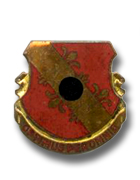 265th Field Artillery Bn DUI 265th Field Artillery Bn DUI |
|||||||||||||||||||||||||||||||||||||||||||||||||||||||||||||||||||||||||||||||||||||
| 1955 | |||||||||||||||||||||||||||||||||||||||||||||||||||||||||||||||||||||||||||||||||||||
| (Source: 265th FA Bn - Best of All, June 1956 - submitted by Jan R. Perrin) I served in the 265 FA from December 1954 until June 1957 Jan Perrin |
|||||||||||||||||||||||||||||||||||||||||||||||||||||||||||||||||||||||||||||||||||||
| The 265th Field Artillery Battalion 1952-1956 The 265 FA Bn. has justified pride in its accomplishments and activities since being reactivated in the summer of 1952. Success in combat -- the true measure of worth in the army of course cannot be ascertained in peacetime. Consequently it is difficult to really distinguish between a good combat outfit and a mediocre one until it has engaged in combat campaigns. But the 265 has always demonstrated its ability to do the job, and today's 265 soldier is no less confident that he can handle any situation the future holds. The 265 has come a long way, figuratively and actually, since its rebirth back at Fort Bragg, N. C., on 7 July 1952. The total strength then was nine officers and one warrant officer. The CO was Maj. Dorris N. Gerard, who has commanded the Bn. on numerous occasions. The unit was one of the first authorized 280 mm guns capable of firing an atomic round. Few, if any, of the personnel then had any idea what the 280 would look like, not to mention knowledge of the technical equipment on the gun and used in conjunction with it. Lt Col Francis Y. Leary assumed command of the battalion on 31 October 1952 and on 29 November the 265 was reorganized at full strength. For the rest of 1952, the 265 was concerned with schools to train both officers and enlisted men. Equipment was short during this time and became critical as the battalion attained full strength. The new year brought many replacements into the unit. Most of these men had been drafted -- a characteristic of the men in the 265 today. The battalion was fortunate in getting some exceptionally conscientious men who became proficient in their jobs in a short time. There was a higher then normal percentage of college graduates among them. About this time the battalion crest with motto was made official "Optintus per Omnia" was selected from among many suggestions by members of the battalion in a contest conducted by Lt. Col. Leary. The winner was Cpl. Shoemaker, a draftsman in the G-3 section; from H & S Btry. Schools on the new T-10 transporters and new type fire direction procedures were held early in 1953 in preparation for the first service practice which was conducted on 16 April. Ten rounds were fired. Also in April the IG inspection came off with the battalion receiving a rating of "excellent." The training in the spring concentrated on field work with blackout driving and blackout occupation of position receiving emphasis. The battalion received a warning order for overseas movement on 16 September 1953. Packing, inspections, weapon qualifications, general processing and leaves occupied the time until 10 November, the sailing date. The 265 arrived at Bremerhaven, Germany, on 21 November. The battalion moved by rail to Baumholder, the present home, on 22 November. The 868th FA Bn., a sister unit which had arrived a short time before, sponsored the 265 on its arrival. The 868 had the mess operating, beds in the barracks, and transportation availible. The remainder of the year was spent in unpacking, drivers testing and getting settled down in general. |
|||||||||||||||||||||||||||||||||||||||||||||||||||||||||||||||||||||||||||||||||||||
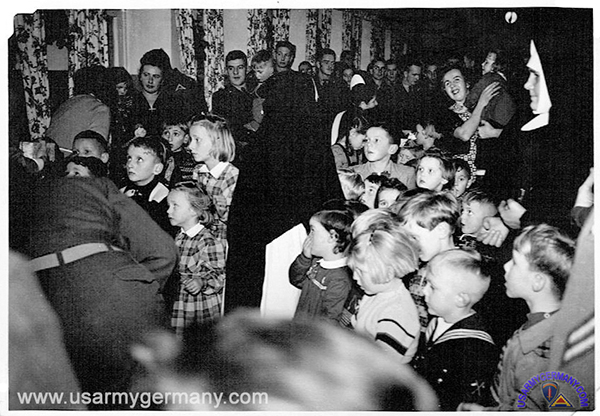 Kinder of the Kusel school look on with anticipation as gifts are handed out during the 1953 Christmas celebration sponsored by the 265th (Eric Wimsatt) |
|||||||||||||||||||||||||||||||||||||||||||||||||||||||||||||||||||||||||||||||||||||
| Christmas 1953 was celebrated by entertaining 95 children from the Kinder Schule in Kusel. Gifts were provided for the children in addition to a big dinner including the usual candy and fruits. The practice of inviting children to share Christmas dinner with the battalion has continued to the present day. The battalion started a busy year in 1954. A lot of new procedures had to become acquainted with. In January three officers of the battalion -- Lt Col Leary, Maj Gerard, and Capt Herbert Conner participated in Exercise "Counter Thrust I " with members of the French army. This was the 265's first experience of working with other members of NATO (North Atlantic Treaty Organization) forces. Most of today's members of the 265 have soldiered on various types of maneuvers with men of several nations, including England, France, Belgium and the Netherlands. Prior to the IG inspection by Seventh Army in March, the 265 also was inspected by the 42nd FA Gp. The battalion, as usual before the IG, worked many extra hours to complete preparations. The battalion received a rating of "Satisfactory." This inspection. provided the unit with much information on theater and army policies that it failed to receive on arrival in Germany. In April, the battalion began preparations for an extended road march. Three reconnaissance parties carefully checked on all proposed routes. The route was changed many times because of bridges, road conditions and narrow streets, all factors in moving the big guns. The battalion left Baumholder on 3 May and drove via Kaiserslautern to the autobahn, Germany's version of the superhighway. The first bivouac area was at Mannheim. One of the gun sections left the column there and proceeded to USAREUR headquarters at Heidelberg for a demonstration. From Mannheim the battalion traveled through Karlsruhe and on to Ludwigsburg for the second night's stop. Again one gun section was detached and sent to Baden-Baden for a demonstration for French forces. The third day the unit journeyed through Heilbronn, Crailsheim and on to Ansbach. The fourth day the unit went to Würzburg, Hanau, and Friedberg. The fifth day ended back at Baumholder via Frankfurt, Mannheim, and Kaiserslautern. The 265 covered over 600 miles on this road march. It was completed without serious accident or delay. This march provided excellent drivers training and also proved the mobility of the T-10 transporters. CPXs, FTXs, service practices, and the regular training cycle consumed most of the summer. Lt Col Leary was reassigned to 42nd FA Gp and on 30 July; Maj Gerard assumed command of the battalion for the second time. |
|||||||||||||||||||||||||||||||||||||||||||||||||||||||||||||||||||||||||||||||||||||
| After a heavy turnover in personnel, the battalion left on another extended road march on 16 August. Two days later as the unit drove south to near the army resort at Garmisch, one gun of "A" battery was involved in a serious accident. The gun, in order to avoid a cyclist, hit a road marker and turned over in a ditch. Five men were injured and extensive damage to the transporters resulted. The battalion arrived back in Baumholder on 21 August and the second long road march was over. The next month was spent in preparation fur the NATO maneuver "Battle Royal," the largest field exercise the 265 has participated in Germany. "Battle Royal" opened on 22 September and the 265 was attached to and supporting the 1st Belgium Corps, the defensive side. The battalion was located at Weidenbrücke. The 265 fired several simulated atomic missions and moved three times while subject to enemy air strikes. In spite of this, only two transporters were ruled damaged by enemy air. The high state of training was really evident in this manuever and the battalion conducted itself in a superior manner throughout, despite very bad weather. Several times the 265 was subject to enemy ground or air observation, but successfully concealed by camouflage, no weapons were discovered. No accidents and no deadlined vehicles made the trip to and from "Battle Royal" a noteworthy occasion. The battalion arrived back home on 30 September, just in time to prepare for the CMI which began 25 October. The battalion received a rating of "Excellent." Lt Col Harry B. Lane took command of the 265 on 15 November with Maj Gerard his executive officer. Christmas day the battalion had 107 orphans from the Kusel Catholic orphanage as guests. Each girl received a doll, Christmas stocking, and face towel while each boy got a car or truck, stocking, and towel. One of the major accomplishments of the 265 during 1954 was winning the "best mess" award for the year in compeition with the other battalions of 42nd FA Gp. The battalion spent a few days in the field in a series of CPXs early in 1955. And then the IG came the last day of March. The battalion received an overall rating of "Excellent" with a number of sections rated "Superior." Another highlight of early 1955 was that in March the 265 basketball team advanced to the finals of the 7th Army battalion level tournament. The 265, with a good battery level A&R program, has contributed several fine athletes to the 42nd FA Gp teams. In April all guns were calibrated by firing from the Reichenbach area. On Armed Forces Day, 21 May, the battalion participated in a parade at Kaiserslautern, displayed two guns at Baumholder, put on a demonstration at the Mainz Ordnance Depot, and held "open house" at its barracks. The burgermeisters and school teachers of several local villages were guests at the day's activities. The battery tests were next on the agenda. They were slated for the Grafenwohr training area in eastern Germany, just a few miles from the Iron Curtain. On 10 June the battalion left Baumholder for this 30 days in the field. The long trip required four days and was completed without incident. After arrival the battalion started rigorous training in preparation for the tests. The battalion staff acted as umpires during the numerous practice tests. Hard work again paid off as battalion completed the tests on 6 July with an average score of 91.31, the highest in the 42nd FA Gp. |
|||||||||||||||||||||||||||||||||||||||||||||||||||||||||||||||||||||||||||||||||||||
| The return trip to Baumholder was marred by an accident involving one of "C" battery's guns. The gun turned over a few miles west of Munich due to power steering failure on the rear transporter. Two men were injured. After returning to Baumholder the 265 again began getting ready for an inspection. The CMI came unannounced in August, and the battalion was ready and came out with an "Excellent." On 8 September,"C" battery, reinforced with signal, ordnance, and one gun from "B" battery, departed for a 10-day exercise with the Dutch near Soltau, Germany. In September, elements of the battalion took part in a four-day CPX with the 1st Belgian Corps at Cologne. Service practices and normal training and maintenance consumed the rest of 1955. On 15 December, Lt Col Lane returned to the ZI and Maj Gerard was battailon commander of the 265 for the third time. Maj Stephens was his executive officer. During Christmas the battalion was host to 53 needy children from the village of Reichenbach. Each child received a gift and big dinner. Among the plaudits earned in 1955 was the "best mess" plaque for all four quarters of the year, and again the group "best mess" yearly award. 1955 also saw the opening of the battalion's own recreation hall in the basement of the mess halI. Television and shuffle board were two of the main attractions in the rec hall. 1956 brought Europe's most severe winter heather in many years. The 265 continued functioning with all of the batteries spending time in the field despite sub freezing temperatures and snow. In July of 1956 the battalion will celebrate its fourth birthday since reactivation with another Organization Day party. And in November of 1956, the 265 will wind up three years in Germany with many of the officers and NCOs who came across the Atlantic with the unit leaving for home and reassigment. |
|||||||||||||||||||||||||||||||||||||||||||||||||||||||||||||||||||||||||||||||||||||
|
|||||||||||||||||||||||||||||||||||||||||||||||||||||||||||||||||||||||||||||||||||||
|
|||||||||||||||||||||||||||||||||||||||||||||||||||||||||||||||||||||||||||||||||||||
| (Email from Bob Hines, 265th FA Bn, 1955-1957) | |||||||||||||||||||||||||||||||||||||||||||||||||||||||||||||||||||||||||||||||||||||
| Was stationed in Baumholder from 9/55 to 2/57. The 265th Field Artillery Battalion was an atomic cannon unit. I remember Baumholder as a bustling center for U.S. troops alongside of a very small town and civilian population. Our unit held at least one "alert" per month when we hoisted the 280's into the woods for a few days. Can remember some very cold winter weather there but the scenery was beautiful. Was attached to "C" Battery. My job as a "CW" radio operator with my radio truck was part of the "FDC" group in that battery. I remember that we had at least one practice "alert" each month where we carted the big guns and everyone attached into the "boondocks" for 2-3 days. The locals weren't real happy with us moving the heavy units over the local roads and bridges because of the extreme weight being transported. Larger scale manuevers were held in Grafenwoehr and Vilseck. One week per month I was assigned to the 7th Army radio net. Can remember seeing many tanks at Baumholder and think they were part of the 2nd Armored Div. Not sure if there were any Infantry units at that time. Bob Hines |
|||||||||||||||||||||||||||||||||||||||||||||||||||||||||||||||||||||||||||||||||||||
|
|||||||||||||||||||||||||||||||||||||||||||||||||||||||||||||||||||||||||||||||||||||
| 1956 | |||||||||||||||||||||||||||||||||||||||||||||||||||||||||||||||||||||||||||||||||||||
| (Source: Email from Jewett E. Huff, 265th FA Bn, 1956- 58) | |||||||||||||||||||||||||||||||||||||||||||||||||||||||||||||||||||||||||||||||||||||
My duty assignments with the 265th FA Bn (later 3rd Gun Bn, 81st Arty) were as follows: |
|||||||||||||||||||||||||||||||||||||||||||||||||||||||||||||||||||||||||||||||||||||
| 1957 | |||||||||||||||||||||||||||||||||||||||||||||||||||||||||||||||||||||||||||||||||||||
| (Source: Email from Calvin G. Lyons, 265th FA Bn, 1957-1958) | |||||||||||||||||||||||||||||||||||||||||||||||||||||||||||||||||||||||||||||||||||||
I found your web site this evening from Google. I note that the 265th FA Bn (280mm Gun) is missing from most of you site data. I was a new 2/LT assigned to the 265th FA Bn at Baumholder arriving in Jan 1957. One of the guns from my battery, C Btry, was in depot maintainance following a serious accident in which one of the T10 unit drivers was killed, so we had only one gun, and I was the platoon leader for the one platoon with a gun.
There was one other 280mm Gun Bn at Baumholder, the 868th. We did most of our training in the BN motor pool since we could not shoot on the Baumholder ranges. In order to fire a live high explosive round we had to go off the Baumnolder Post to an outlying area and fire over German property on to the Baumholder impact area. The Germans protested this so much that we finally ended up no longer being able to fire life fire at Baumhnolder. Once a year we made the long motor march to Vilseck/Grafenwoehr where we stayed about six weeks for practice and the annual Battery Tests. My first year there, June 1957, C Battery of the 265th won the Watson Trophy for the highest battery score on the annual test. Our battery Commander, Captain Korp, was a former Warrant Officer who had been commissioned during the Korean War...to the best of my recollection. I was there during the time when the Army decided to discharge those soldiers who had low scores on their entry tests. We lost some of our best soldiers as a result...they weren't brilliant, but they were good cannoneers! We even lost one man from our battery fire direction center, so he was no dummy...he had just scored badly on his entry exams...probably after spending a night on the town. During the big Army CARS reorganization in 1958 the 265 was redesignated the 3rd Gun Bn, 81st Arty. Shorty after that my two year FA detail was up and I reverted to my Regular Army Branch of Quartermaster and was reassigned to Pirmasens. I still manage to maintain contact with three or four of the 265th officers. |
|||||||||||||||||||||||||||||||||||||||||||||||||||||||||||||||||||||||||||||||||||||
| (Source: Author's private collection) | |||||||||||||||||||||||||||||||||||||||||||||||||||||||||||||||||||||||||||||||||||||
|
|||||||||||||||||||||||||||||||||||||||||||||||||||||||||||||||||||||||||||||||||||||
| 559th FA Msl Battalion (Corporal) | |||||||||||||||||||||||||||||||||||||||||||||||||||||||||||||||||||||||||||||||||||||
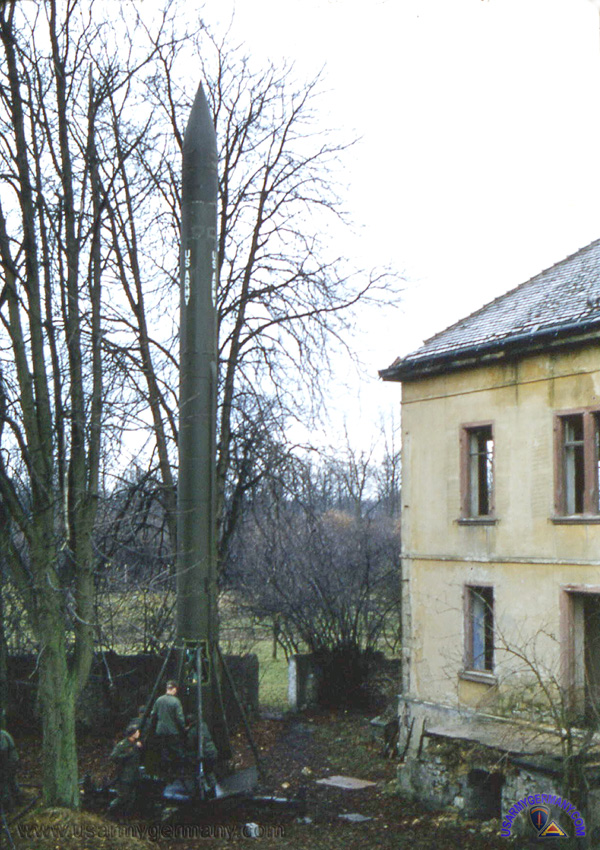 559th FAM Bn Corporal missile during a training exercise near Mainz, 1957 (Dick Rossé) |
|||||||||||||||||||||||||||||||||||||||||||||||||||||||||||||||||||||||||||||||||||||
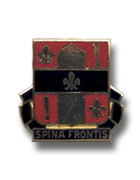 559th Field Artillery Missile Bn DUI
559th Field Artillery Missile Bn DUI |
|||||||||||||||||||||||||||||||||||||||||||||||||||||||||||||||||||||||||||||||||||||
| 1956 | |||||||||||||||||||||||||||||||||||||||||||||||||||||||||||||||||||||||||||||||||||||
| (Source: Email from Elsworth Walker, 559th FAM Bn, 1957 - 1958) | |||||||||||||||||||||||||||||||||||||||||||||||||||||||||||||||||||||||||||||||||||||
| I served as Commo with the 559th Corporal Missile Battalion in Mainz/Gonsenheim for three years (from 1956 to 1959). The battalion, part of the 42nd Field Artillery Group in Baumholder, was redesignated the 2nd Bn, 84th Arty sometime in 1958, as I recall. My time with the 559th FA Corporal Missile Battalion seemed to be spent largely in the field, either in the Fulda Gap or in north Germany, in support of our British cousins and their Army on the Rhine. In fact, two weeks after my arrival, we were sent on an exercise in the Bad Kissingen area. This was at the time of a rare double-crisis: the war over the Suez and the Hungarian revolt. As communications officer, I headed a platoon that was responsible for installing hardwire and microwave hookups. The battalion message center also was part of my platoon. That meant custodianship of the ultra-secret KL-7 crypto machines, a pretty awesome responsibility for a 22 year old Shavetail. Back at the Kaserne (renamed Lee Barracks, later) in the Mainz suburb of Gonsenheim, I was tasked with several additional duties, including pay officer, troop information officer and, for a time, mess officer. In my 14 months as pay officer, I'm proud to say I never once came up short. Good thing, too: we were not bonded. So, we were required to make up any discrepancies from our own pocket. The pay officer at our sister battalion, the 530th, could not account for four hundred dollars on one occasion. His fellow officers took up a collection to help him out. I think they raised about 30 dollars. A fond memory was getting permission to use my commo platoon as grave diggers in a medieval Jewish cemetery next to the Mainz Bahnhof at the behest of a Mainz University professor. Professor Rapp (I believe was his name) was conducting research on the Mainz Jewish community that had flourished in the middle-ages before falling victim to several deadly pogroms. The first of the 559th's commanders was Colonel (first name?) Crowe, whom everyone seemed to like and admire. I recall there was a huge black and white blowup of a Corporal leaving the launch pad outside Crowe's office. The caption read: "As the Crowe Flies." He was succeeded by a Major John Ylinnen who in turn was succeeded by Colonel Joseph McGuire. Each summer, the Firing Battery would fly to White Sands to fire the Corporal (live testing wasn't permitted in Germany). We in Headquarters Battery were left behind. While we were a component of the 42nd Group, I personally had very little contact with the folks in Baumholder, except to attend occasional classes on 'special weapons' and 'troop information." There was nothing like a long weekend in January in the rural charms of Baumholder to make one realize how lucky one was to be stationed in Mainz, with its proximity to the allurements of Wiesbaden just across the river. In 1959, with a new German wife and infant daughter, I elected to separate from military service and accept a civilian position in the news department of the American Forces Network in Frankfurt. I hope some of this might be useful. |
|||||||||||||||||||||||||||||||||||||||||||||||||||||||||||||||||||||||||||||||||||||
| 1957 | |||||||||||||||||||||||||||||||||||||||||||||||||||||||||||||||||||||||||||||||||||||
| (Source: Email from Elsworth Walker, 559th FAM Bn, 1957 - 1958) | |||||||||||||||||||||||||||||||||||||||||||||||||||||||||||||||||||||||||||||||||||||
| Click here to proceed to Elsworth's recollections of the 59th FA Bn. | |||||||||||||||||||||||||||||||||||||||||||||||||||||||||||||||||||||||||||||||||||||
| My new home was
at Mainz, Germany, Lee Barracks, home of the 559
FA Missile Battalion. The 559th was equipped with Corporal
missiles, with atomic warheads. One missile for each Battery. Lee Barracks were three stories and had been a German Post during the war. Also billeted at the post were the 42nd Armored Infantry Battalion, 2nd Armored Division, and our support unit. The 42nd had M-48 tanks and tracked box cars for infantry troops to ride in. I was assigned to Hdq. and Service Battery, by the Motor Officer, Chief Warrant Officer Honeycut, as a "jack of all trades." I was parts order man, drove parts truck, assistant wrecker operator, did some light mechanic work, also was section leader. I never felt at home in the 559th, just wasn't a fit for me. No engineer equipment. Our shops were in buildings that had been horse stables, during the war. Maintenance Section had a 2½-ton shop truck, 5-ton wrecker, 5-ton truck and 40' trailer for gas cans, supply truck and 40' trailer, two jeeps and trailers. Also a couple of ¾-ton trucks and trailers. Maintenance NCO's and section leaders were issued carbines, mechanics M-1 rifles, Jeep drivers M-45 (grease guns), they also were battery scouts. Also we had three 30-cal. machine-gun, two 50-cal. machine guns, ring mounted on trucks roofs, or could be fired from ground tri.-pod. One bazooka rounded out our weapons. Every man in the section had to live fire all these weapons. When I fired the grease gun it climbed up and I missed the target with all 20 bullets. Instructor said "you wouldn't hit any one but you would scare them to death." The 559th wasn't a spit and polish unit like the 59th was. Our Battery Commander was Captain Smally. We called him "Tough Spike," behind his back He was really overweight and his pistol belt hung down to knees, below his belly. Pre-World War II and Korean combat veteran, another mustang. He talked in a slow southern drawl. Fun and games ended when Captain Spike left for the States to retire. Then we got a West Pointer, Captain Rivera. He showed up when we were in the field. Our first formation with him was a disaster. The Maintenance Section worked in surplus uniform, with big red X's on them, as we got dirty. He put out an order that we were to have clean uniforms every day and shined boots. Motor Sgt. did allow us to wear red X field jackets and fatigues over our clothes as long as we stayed in the shop area. Shortly there after "Pointer" left for the States as the firing batteries had a live fire at White Sands, N.M. He was gone for a month, which was just fine. I hauled a truckload of equipment to Wiesbaden, A.F. Base, which was going with them. Border Patrol Guard I spent two weeks on border patrol duty, near the East German border. Our position was stationary and camouflaged. At our post we had our personal weapons, one 30-cal. machine gun on a tri-pod, and one bazooka. Nights got real long and dark. A jeep was on roving patrol and they would stop by and visit. Every other night we went back to billets for showers, and part of the next day off. During one of the weekends there was a festival and carnival in a small town near our billet. East Germans were allowed through a gate with a pass. We took a couple of East German girls on rides; one of the girls lost her necklace on a loop-o plane ride. They only had a pass until 10 PM, so bid them good by at the gate. Duty there got real boring, all there was to see was a fence, 8 foot high; Open stretch of ground and a thick woods. A couple of the guys claimed the saw green uniforms, a patrol. We could see guard towers in the distance, they didn't seem to be manned. I am sure there was patrols out there, I just didn't see any. The fence had signs on it, "minen" and skull and cross bone, which ment mine field on the other side. Medical C.P.X. I volunteered to go on a 81st Battalion Medical Company training CPX. I was a simulated combat injury. I was picked up by medics and put on a stretcher carried to a 1st aid station. Hand wound was dressed. As I weighed less then 150 lbs, I was evacuated by helicopter, yes; I rode on the side on the stretcher, to a M.A.S.H. unit. From there I crossed the Rhine River on a barge. Loaded on a "Flying Banana," flown to a field hospital, 3rd Medical Evacuation Hospital. I spent two days in tent hospital. I was ambulatory, so could walk around. Some of the casualties were in body casts so weren't so lucky. We had a mean looking "Head Nurse," a Major, in our ward. We only had one blanket but empty bunks had a blanket so we took those. She came around tipping over bunks, rolling people out, so as to get the blankets that were hidden under the mattress. I took a picture of a couple of nurses; they go upset and chewed me out. After I found out how the nurses used a pencil, I began to think they were weird. Last CPX in Army October 1957- the 559th was on CPX about two kilometers from the small town of Milchbach. I had been there several times before and made trips to town, when road testing vehicles. I had gotten to know the Frau and Herr who ran the local Gaust Haus. So I set up a section party on our last Saturday night in the field. We could do this as we were several K's away from the firing battery and could be more relaxed. Everyone showed up even the motor sergeant. Short Timer I was up for promotion but stated I wouldn't re-up so was passed over. My buddy Ding-Dong Bell got the stripe and didn't re-up, as he said he was going to. I.G. Inspection Big talk was about Inspector General (I.G.) inspection coming up in Nov. This was the highest inspection the Army held. Every piece of equipment had to be spit shined or painted. So the next month was spent on smaller inspections. "Pointer," was beside his self, nothing was good enough. Truck chains were shinnied; all vehicles wheels greased and new seals put in. Grease zerks all painted red. Painted and remarked equipment. All field equipment cleaned and made serviceable. I was glad my time in the army was getting close. Finally Inspectors came and left. The Battery Commander made me his orderly. He was upset on my section flunking pre-inspection on our field equipment. Most were short timers in my section and weren't gung-ho. So I was thanked for giving almost three years of my life by shining his boots and being an errand boy (Orderly) for him. My last week in Germany was spent turning in equipment, getting records checked. I had no duty so just wondered around. Headed For Land of the Big P.X. Left by train for Bremerhaven and boarded the U.S.N. (troop ship) General Black. Can't remember much about the ship except it was larger then the Taylor and was built as a troop ship. December in the Atlantic is very stormy and rough. No ship newspaper, no games, very low-keyed trip. Another fellow and I volunteered to work with the Chief Mess Steward. He was a great person and Navy reservist. We ate most of our meals with him and had good chow. I guess you could say I saw Christmas Eve twice as our clocks were set backwards. Arrived in New York and Statue of Liberty. Sat out in the harbor for 24 hours on quarantine. Docked at Fort Hamilton. Boarded troop train for Ft. Sheridan, Illinois. The ride was long, about three days. We were fed a lot of dried eggs and powered milk. Arrived at Ft. Sheridan on Jan. 5th, cold and snow. A lot of hurry-up and wait during outprocessing. Finally got back pay, soldiers deposit, trip home pay. Released from service nine days early. Summary My time in the service was considered to be during the Korean War Era and "Cold War." I feel we averted a shooting war during these years by having a strong military. I am proud of serving my country. My family has shown they are proud to be Americans by their honoring family and country. I read an article recently about service during the cold war. Author stated "There were no cowards serving during the Cold War." "You were the only ones standing between destruction of the world or peace." During 2000 I received a "Certificate Of Recognition" and medal for my service during the period of the Cold War, 2 Sept. 1945 - 26 Dec. 1991 "in promoting peace and stability for this nation, the people of this Nation are forever grateful." I'm now authorized to wear the commemorative oversea's service ribbon, U.S. Army Service ribbon and Army Reserve ribbons and medals. I think it's a sad state when it took our government 55 years to recognize the Cold War service. The biggest honor of my life is when my wife and two sons, Dale and Rodney, returned with me to Europe in 1996. We were able to tour many of the places I had been at in the service. England, Germany, Switzerland and Austria. We also were able to visit Bev's pen pal in England whom she had written to for 45 years. Also we visited places son, Dale, had been at when in was in the Air Force. After 40 years I found many changes in Germany, large farm equipment as opposed to oxen drawn equipment. All bomb damage repaired. Army Posts where I had been were either being demolished or empty, as a large United States military force isn't required in Europe now. I found that one will never see the same things as in the past and I am glad of that. I maybe went into too much detail on this story but felt should do so as sort of a historical reading. I wanted my wife, our children, their spouses, grandchildren and their children someday to know about this part of my life. Elsworth Walker Email to Elsworth Walker |
|||||||||||||||||||||||||||||||||||||||||||||||||||||||||||||||||||||||||||||||||||||
|
|
|||||||||||||||||||||||||||||||||||||||||||||||||||||||||||||||||||||||||||||||||||||
| 601st FA Msl Battalion (Corporal) | |||||||||||||||||||||||||||||||||||||||||||||||||||||||||||||||||||||||||||||||||||||
| 1957 | |||||||||||||||||||||||||||||||||||||||||||||||||||||||||||||||||||||||||||||||||||||
| (Source: Email from Eugene O. (Neal) Moore, 601st FAM Bn, 1958- ) | |||||||||||||||||||||||||||||||||||||||||||||||||||||||||||||||||||||||||||||||||||||
| I was assigned to the 601st in June of 1958 from the FAMTC at Ft. Sill, where I was an instructor. I met the unit at Ft. Bliss on a TDY basis to participate in the ASP. After the annual firing I had a 30 day delay in route prior to reporting to Ft. Dix for deployment to Germany. I arrived in good old “Sunny Zwei” and was assigned to one of the Assembly and Test platoons. Lt Kenneth B. Stinson was our Platoon leader and CWO Columbine was the Msl Warrant. The section chief was Sgt VonEshchen. The 22 months that I spent there were very enjoyable. When I was assigned to the battery it was still the 601st, but by the time that I arrived in Germany, the unit designation had been changed to the 2nd Msl Bn 40th Arty. The Bn CO when I arrived was a Col. Simon who was later relieved by Col. P. T. Hatter. Our direct support was provided by the 204 Ord. Det. at the time of my arrival. I especially remember Jerry Nichols from the 204th. Some of the folks that I remember (I hesitate to mention names as I will surely forget someone that I shouldn’t) are Plt Sgt John R. (Whitey) Collum from Columbia, SC, Jerry Winters from TN, Jerry Schafer from PN, Danny Mosley from TX, Andy Aschetino(?) from NY, Willey Sutton from NJ. I also remember the field problems when, after several days of tactical movement (mud on all of the bumper numbers) we had to get steel pots of water to wash the vehicles before we could drive them on the highways. I also remember walking down the hill to Zwei. and stopping at the Yeager Hof for a pizza on the way. After all of these years it would be good to hear from some of the guys. |
|||||||||||||||||||||||||||||||||||||||||||||||||||||||||||||||||||||||||||||||||||||
| 868th FA Bn (280mm Gun) - 3rd Gun Bn, 84th Arty | |||||||||||||||||||||||||||||||||||||||||||||||||||||||||||||||||||||||||||||||||||||
| 1953 | |||||||||||||||||||||||||||||||||||||||||||||||||||||||||||||||||||||||||||||||||||||
| (Source: Email from Warren Althaus, A Btry, 868th FA Bn, 1953-56) | |||||||||||||||||||||||||||||||||||||||||||||||||||||||||||||||||||||||||||||||||||||
| I was assigned to A Btry, 868th FA BN from Dec 1953 to Apr 1956, when I returned to the States for discharge. I was one of the first replacements to arrive as the unit had only been there a couple of months. When I arrived I had a mechanic's MOS, but they had plenty of people in the motor pool. Lt Capps, the XO, later CO of the btry sent me to Survey School in Murnau (USAREUR Engineer School). The rest of my tour was in the survey section, which was a pretty good assignment. I was really happy when I found out that we had German Nationals working in our mess hall so we didn't have to pull KP. It cost a little bit but I was glad to pay. We pulled guard duty quite a bit. As I recall week-day guard came every 10 days or so and week-end guard was once every 3 weeks. It wasn't too bad in the summer, but it got pretty cold in the winter. They were so careful of the guns (280mm) that we didn't go to the field in the winter, until 1955-56. In the winter it was all garrison duty. I was a private right out of basic when I got there. It took a few months and a meeting with the commander before myself and Loyal Hyatt got promoted to PFC. Loyal even had to go to the orderly room and type the order himself. In May of 1955 we were at on a field problem and one guy got himself busted and I got his blood stripe. I was a 19 year old corporal -- at least for a while. I was promoted on May 25, but specialist stripes came into being on July 1. In the meantime we had an IG inspection so I had to sew corporal stripes on all my uniforms. On 1 July I became a SP3. This meant back to private of the guard. Ultimately I got enough seniority among the E-4s so I was put on the Corporal of the Guard roster. I was offered an E-5 stripe if I would re-enlist, but declined. The stripe went to a draftee in one of the gun sections who didn't re-enlist as promised. I have no knowledge of any promotion above E4 during that tour of duty that was not conditional on a promise of re-enlistment. Probably the most outstanding NCOs I met there was SFC Daniel Ford. He was a black man with more seniority (or so I was told) than any of the other NCOs in the battery, but wasn't first sergeant because of his color. He later went back to the States to OCS. He finished his career as a LTC in the IG Corps. The biggest problem I had was the low salary. Even as a CPL I only earned $120 a month. We didn't live large, but in retrospect it wasn't that bad. I got out of the Army, but 4 years later came back and was disappointed to learn that the big guns were gone. I finished my career as a CPT (USAR Maj), after serving most of my time as an enlisted man. I have always kept my eyes open for a reunion of the 868th or the 42nd Artillery Group, but haven't found one. |
|||||||||||||||||||||||||||||||||||||||||||||||||||||||||||||||||||||||||||||||||||||
| 1958 | |||||||||||||||||||||||||||||||||||||||||||||||||||||||||||||||||||||||||||||||||||||
| (Source: Email from George Warner, 1958-59) | |||||||||||||||||||||||||||||||||||||||||||||||||||||||||||||||||||||||||||||||||||||
|
|||||||||||||||||||||||||||||||||||||||||||||||||||||||||||||||||||||||||||||||||||||
| (Source: Email from Jim Landgraf, "Cobra" 280mm Gun Platoon commander, C Btry 3/84th Arty) | |||||||||||||||||||||||||||||||||||||||||||||||||||||||||||||||||||||||||||||||||||||
| I arrived in Germany on 20 Dec 1958 as a brand new 2Lt, 20 years old and assigned to something called a 280mm Gun battalion in Baumholder Germany. Two weeks later I was waxing the undercarriage of a van used for assembling Nuclear weapons in preparation for a TPI. In March of 1959 my 280mm Gun toppled into a ditch on our way to Northern Germany to participate in a Silver Shield exercise. Later that year we went to Luxembourg to participate in their annual Patton Days celebration. We also demonstrated our capability to NATO officers at Finthen Airfield in Mainz, earning a free 3 day trip to Paris for our outstanding performance ( And I was supposed to keep track of 20 Crew members in Paris so we could be recalled if the balloon went up. Hilarious!) Live fire at Graf was always exciting and it was sad when in May of 1960, we drove our Guns to Kaiserslautern and said fairwell as Lt Wm. Lockwood of A Battery blew taps on his bugle. I have fond memories of that period: 4.25 DM to the dollar, a beer was 1 DM and a good meal at the Bahnhof restaurant was 4 DM. AAFES gas was 11 cents per gallon and ESSO was 26 cents. Baumholder was a great place to be because the 40 bars gave me great incentive to travel. (Although I did catch a few of the shows at the Goldener Angle Club.) I celebrated my 21st Birthday at the French Officers Club in Baumholder and was presented with my first Class VI card at that time. I met a large number of great friends in that year and a half and even keep in touch with some of them today. I have many pictures from this era and will email them as soon as I get my scanner working again or get a new one. ADDITIONAL INFORMATION I have the FM 6-96 dtd Jul 52 "Service of the 280-mm Gun, T-131 on Carriage T-72", so I have the gun platoon organization as it was supposed to be. (TOE and actual fill was always different.)
GUN PLATOON: It called for a Chief of Section, Gunner, Asst. Gunner and 6 Cannoneers, an Artillery Mechanic, Front and Rear Transporter Drivers and Assistants, a Generator Operator and the Ammo Truck Driver. Since each platoon had a lead jeep there was also a jeep driver (usually one of the Cannoneers). I also have the Final inspection documents from the Mainz Ordnance Depot dtd 23 Dec 54 which shows that the COBRA was tube #3 on Carriage # 10, Manufactured at Watertown Arsenal in 1952. I also have the USAREUR Trafficability Data which says the length is 85' with transporters, weight is 180,000#, height is 12.5 ', width 11', turning radius 40' and road clearance of 31". The "Cobra" was also credited with taking off a store front in Lauterecken on its way to a Rhine River crossing. I also remember firing from off site in Baumholder from a town called Reichenbach, firing the 600# projectile with Charge 9 over several German communities. It was awesome to see a single round lift up a whole grid square and mess it all over the place. and by the way, the MP's clocked us at 58 mph on the Autobahn when returning from a Battery Test at Graf. A roster of the Battalion dtd 25 May 1960 shows the Commander as LTC Wm D. Chrietzberg. |
|||||||||||||||||||||||||||||||||||||||||||||||||||||||||||||||||||||||||||||||||||||
| 6th Bn, 9th FA (175mm) | |||||||||||||||||||||||||||||||||||||||||||||||||||||||||||||||||||||||||||||||||||||
| (Source: Email from Edward Andrew Faust, III) | |||||||||||||||||||||||||||||||||||||||||||||||||||||||||||||||||||||||||||||||||||||
| I have a group picture of our unit Battery C in 1963 in Rivers Barracks who came from Hoechst, Frankfurt(McNair). I was a PFC in the Ammo unit in 1963 and I was proud to serve. | |||||||||||||||||||||||||||||||||||||||||||||||||||||||||||||||||||||||||||||||||||||
| (Source: Email from Randy Aldrich) | |||||||||||||||||||||||||||||||||||||||||||||||||||||||||||||||||||||||||||||||||||||
|
|||||||||||||||||||||||||||||||||||||||||||||||||||||||||||||||||||||||||||||||||||||
| 1966 | |||||||||||||||||||||||||||||||||||||||||||||||||||||||||||||||||||||||||||||||||||||
| (Source: Email from Michael Strickland, son of Lt Col Henry Ewell Strickland, former CO of 6th Bn, 9th Artillery, 1966-67) | |||||||||||||||||||||||||||||||||||||||||||||||||||||||||||||||||||||||||||||||||||||
My father, LTC Henry Ewell (Hank) Strickland, Jr. (deceased 12/20/2012) was commander of 6th Battalion, 9th Artillery (175 mm Self-Propelled howitzers) which was at Rivers Barracks in Giessen, Germany. We were there from Fall 1966 - Feb/Mar 1968. I was 8 years old (3rd grade - 4th grade) at the time so my memories are not crystal clear. My father's executive officer was Major Lightner (?). I remember a black guy (Pvt/Cpl/Sgt? McAllister (jeep driver). I remember one of the Lieutenants (a company commander?) had an Alfa Romeo and I remember the Getoggio brothers, enlisted (twins). One of the pictures on your site (3. 175mm SP Gun, 6th Bn, 9th FA) could have included my dad, Lt. Col Henry Strickland (walking out of the picture in the right foreground and Col Wallace Magathan right most of the three guys in the center talking). The picture is small so I can't be sure. It looks like the picture was of an inspection or something. As I recall, the 6th of the 9th was in the building on the right (short end of the rectangle) as you went in the gate. We would go to Rivers Barracks every Sunday for mass. I remember the U-shaped layout of staff/office buildings with the Officers Club, NCO club, and chapel in the NE corner (as you came in the gate, not sure of the absoulte orientation). The 175 mm guns were usually parked in the same corner, just in front of these corner buildings (just west of them). There was a field behind the gun "parking lot" where there might have been one "kind of museum piece" 175mm SPH. I remember the big fat missile thing (shown in one of your pictures) which we thought was an ammo depot or air raid shelter. Maybe it was just there to scare Russian satellites into thinking we had "one" (a nuke) on the pad ready to go - lol. I remember going for the parade day thing and a change of command ceremony. I remember going to Grafenwoehr for some sort of Family weekend and my Dad was wearing his .45 cal Colt M1911A1 and ear plugs. My Dad's battalion (6th of the 9th) won some kind of award for scoring a "direct hit" on the test range. My Mother (Muriel) or we kids got to fire the howitzers (pull the cord). I don't remember if I got to fire one. My older brother said he got to drive a 2 1/2 ton truck (he was 12). I remember, in Giessen, we had to have two weeks worth of rations ready at home in case the Russians came in and we (dependents) had to bug out. All us kids were issued dog-tags with our name and my Dad's serial number on them) instead of Army ID cards, which we were used to having back in the States. This really made us feel like little soldiers - lol. I remember the fallout shelter symbols at our school (Giessen American Elementary, I believe) but we had no "duck and cover" drills. I remember Rivers Barracks. We used to drive there in our White 1966 Volkswagen 1300 (1.3L) which my Dad bought when we first arrived. We also had black & white Chevrolet station wagon which bit the dust (threw a rod) on the trip down to Munich in 1968. LTC Ring was the commanding officer of the 2nd of the 82nd (8" self-propelled howitzers). I remember his sons (Kurt - my brothers age) and Greg (my age) and their dachshund (Herman). The Rings lived in our apartment building (behind a motor pool which was at the Army shopping complex (PX, Snack Bar, Magazine store, Library, Movie Theatre, etc...) which was located some distance from Rivers Barracks. COL Mundinger (deceased) was the commander of the Honest John missile battalion (3rd MSL Bn, 79th Arty). I remember his daughter, Susan (about my age). All three and another 8" SPH battalion (according to your page)were members of the 42nd Group which was commanded by Col. Wallace [not Walter] C. Magathan. I remember his children, Wally, Shelly, Pam, Barbara, Earl, and Nancy (my age). I used to play with Earl (deceased) behind their house in the bomb craters left over from WW II. They made great sandboxes for matchbox cars. I remember playing with race car sets and the day we melted down a bunch of .45 cal slugs on the stove and made a lead Frisbee like the one "Odd-Job" used in the James Bond movie, "Goldfinger". I remember comming back from Earl Magathan's house or the Post snack bar many times and the gate out of the motor pool was closed. It was here that I learned the folly of placing the barbs on the barbed wire a hand space apart. Many times I would climb the fence (8ft with three lines of barbed wire atop it). It was a short cut to our apartment complex. I also learned the folly of riding a bicycle around a blind corner of the path around the courtyard of the apartment complex at full speed. I impacted some girl's forehead with my front teeth. The dentist put them in a cast, but could not save the left front one. My dad volunteered for Vietnam in 1968 and we stayed in Munich, Germany while he was there (Central Highlands, Pleiku, Da Nang, Nah Tran, etc...). Because my Mom didn't want to go back to the States, we lost our PX privleges and had to live "on the economy". She was worried about the German toilet paper (too rough), so just before he left we bought a big freezer and bought a side of beef and tons of American toilet paper. Decades after he got back from Vietnam, he later told me he was moving 155mm howitzers around to different (mobile) firebases. I had always thought that he had 175mm SPHs there. Maybe he was using both. In one letter, he sent me a color picture of a 400 pound tiger carcass tied to a pole in the middle of one of the firebases. The story was that the perimeter guard/patroller heard a rustle in the bushes, turned, and saw the tiger coming at him in mid air. He dropped it with one round from his M16. I lost the picture, but it was impressive. |
|||||||||||||||||||||||||||||||||||||||||||||||||||||||||||||||||||||||||||||||||||||
| 1977 | |||||||||||||||||||||||||||||||||||||||||||||||||||||||||||||||||||||||||||||||||||||
| (Source: Email from Michael Davis) | |||||||||||||||||||||||||||||||||||||||||||||||||||||||||||||||||||||||||||||||||||||
| Assignments included positions on a 175 mm self propelled gun, ammo section and battery cmdrs driver. Here are a couple of pictures of the 175 MM Self-Propelled Howitzer, in action. The two "muddy" pictures were taken in 1977 at Grafenwohr, West Germany, or at the time called Federal Republic of Germany. Grafenwohr was the only place in Germany that we could "live" fire these guns and then at the most a "3 charge". The powder charges were in five sections and the remaining two charges from every "live" fire round were eventually burned in a bonfire before leaving the firing range. If you can imagine one powder charge was approximately 10" in diameter by approximately 10" long, the gunpowder contained in a cheesecloth type material, two un-used charges from every round times five gun batteries. It was not un-common to burn up to 100 powder charges from a fire mission. The bon fire was spectacular as the powder would burn, when ignited, very quickly and intensely for about 30 seconds. The third picture is of a fully camouflaged gun and ammo carrier (M548) with the actual projectile caught in mid air just as it was leaving the tube. The rounds were approximately 32" inches high and approximately 147 pounds each, without the fuse attached. I believe this picture was taken in 1978. Back to the powder charges; a full charge was a five charge and this full charge would enable the gun to reach a firing distance of approximately 20-23 miles, maximum. These guns were part of the 6th Battalion 9th Field Artillery Battalion, A Battery. |
|||||||||||||||||||||||||||||||||||||||||||||||||||||||||||||||||||||||||||||||||||||
|
|||||||||||||||||||||||||||||||||||||||||||||||||||||||||||||||||||||||||||||||||||||
| (Source: Email from Jerry Case) | |||||||||||||||||||||||||||||||||||||||||||||||||||||||||||||||||||||||||||||||||||||
|
|||||||||||||||||||||||||||||||||||||||||||||||||||||||||||||||||||||||||||||||||||||
| 2nd Bn, 18th FA (8in SP) | |||||||||||||||||||||||||||||||||||||||||||||||||||||||||||||||||||||||||||||||||||||
| 1964 | |||||||||||||||||||||||||||||||||||||||||||||||||||||||||||||||||||||||||||||||||||||
| (Source: Email from Tommy Madrid) | |||||||||||||||||||||||||||||||||||||||||||||||||||||||||||||||||||||||||||||||||||||
| I was in the U.S. Army from Jan. 17, 1964 to Jan. 1967. I took my basic training in Fort Ord, Ca. After basic training I was send to Fort Bragg, North Carolina for my A.I.T. I was assigned to "A" Btry. 7th. Bn. / 15 th. Artillery which at that time was on the 8" Tow Howitzers. This became my unit after A.I.T. Then on mid-June, 1965, I believe on our morning formation, they called our names and you had to form 3 groups. My group was about 4 men from my Battery and we were shipped to Germany. One of the other groups got shipped to Korea and the biggest of the groups got shipped to Viet Nam. We landed in Bremerhaven, Germany and went to Giessen, Germany - which was a mistake. We were supposed to be send to Butzbach, so for about 3 weeks we just sat around till they got our orders right and were put on a train to Schloss Kaserne in Butzbach. I was assigned to "B" Btry. 2nd. Bn. / 18 Arty. which was also a 8" How. S.P. Oh, this was in the end of August 1965. Then around the end of October or the beginning of November in 1966 we got orders and we had to pack everything from bunk beds to wall lockers and everything that belong to our unit and we put on 10 trucks and send to Rothwesten Kaserne near Kassel, Germany which I believe was way up in the mountains cause I never saw the sun while I was there. On Dec. 23rd, 1966 my tour was over and I came home. So my question is where have all the men from my unit gone to ? I mean is there anyone out there that is still kicking. |
|||||||||||||||||||||||||||||||||||||||||||||||||||||||||||||||||||||||||||||||||||||
| 3rd Bn, 79th FA (Lance) | |||||||||||||||||||||||||||||||||||||||||||||||||||||||||||||||||||||||||||||||||||||
| (Source: Email from Rocky D. Beebe, C Btry, 3rd Bn, 79th FA) | |||||||||||||||||||||||||||||||||||||||||||||||||||||||||||||||||||||||||||||||||||||
| I was assigned to C Btry 3/79th FA, which was part of the 42 Group's Lance Missile Bn, at Rivers Barracks Giessen, Germany from 1975 to 1978. |
|||||||||||||||||||||||||||||||||||||||||||||||||||||||||||||||||||||||||||||||||||||
|
|||||||||||||||||||||||||||||||||||||||||||||||||||||||||||||||||||||||||||||||||||||
| 2nd Bn, 92nd FA (8in How)(SP) | |||||||||||||||||||||||||||||||||||||||||||||||||||||||||||||||||||||||||||||||||||||
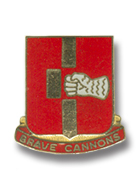 2nd Bn, 92nd FA DI 2nd Bn, 92nd FA DI |
|||||||||||||||||||||||||||||||||||||||||||||||||||||||||||||||||||||||||||||||||||||
| 1963 | |||||||||||||||||||||||||||||||||||||||||||||||||||||||||||||||||||||||||||||||||||||
| (Source: Author's private collection) | |||||||||||||||||||||||||||||||||||||||||||||||||||||||||||||||||||||||||||||||||||||
|
|||||||||||||||||||||||||||||||||||||||||||||||||||||||||||||||||||||||||||||||||||||
| 1967 | |||||||||||||||||||||||||||||||||||||||||||||||||||||||||||||||||||||||||||||||||||||
| (Source: Email from Michael S. Terrell, C Btry, 2nd Bn, 92nd Arty) | |||||||||||||||||||||||||||||||||||||||||||||||||||||||||||||||||||||||||||||||||||||
| This has to be awesome to read of soldiers who actually served at Rivers Barracks in Giessen Germany . . . There are pictures of Rivers Barracks (formerly the German outpost Verdun Kaserne) somewhere on the net. I also see none have mentioned the other unit besides the 2/92nd,the 3/39th,the 6/9th and it was the 517th Honest John Rocket unit The EM club was called "The Rondezvous" and the NCO club under the snack bar building was called the "Ratskeller." The USO club was upstairs from the base PX and photo lab building in the far backcorner. The late alerts and drunken soldiers was something to witness.....LOL...and Graf (Grafenwoehr). Winter and summer training excercises for the artillery units.....summer was great but the winter - in a fox hole - for hours? Hmmm, maybe NOT so great. I served in C Battery Commo section 8/1967 to 3/1970. My truck was a 3/4 ton - C-7. I miss that truck. I was on guard duty in the motor pool the night of the lunar landing. That was a "where were you then" experince. LOL I could go on forever talking about Geissen. We wore the "Seven Steps To Hell" patch for a year then we changed to the "Chrysler" patch of V Corps. Our coat of arms was the armoured fist punching through a Golden wall on a red background and with a banner below it saying 'Brave Cannons.' Would be nice if I could find my friends I served with too - Tony Ledoux (Georgia) and Danny Garber (Evans)(Texas) of A Btry. |
|||||||||||||||||||||||||||||||||||||||||||||||||||||||||||||||||||||||||||||||||||||
| (Source: Email from Dink Lowery, B Btry, 2nd Bn, 92nd FA) | |||||||||||||||||||||||||||||||||||||||||||||||||||||||||||||||||||||||||||||||||||||
| I was in B Battery, 2nd Battalion, 92nd Artillery stationed at Rivers Barracks, Giessen from June 1966 to December 1967. Battery CO was at first Donald Houston; XO was Lt Hawks; FDO was Stuart Travis and HQ's Adjutant was CW/4 Thomas Jackson. Then, in 1967, CO was Capt Stuart Travis; XO was Lt William Dickerson; and Top was A. Reichmann. We were part of the M110 8inch self-propelled howitzer unit. We had alerts quite often; did FTX's for ten and fifteen days. But the big ones were a summer and winter trip to Grafenwoehr. The photos Sgt Rubin (see Rubin's email above) submitted were taken at Rivers Barracks during, what we called, "Organization Day." I am attaching a few additional pictures from that day. |
|||||||||||||||||||||||||||||||||||||||||||||||||||||||||||||||||||||||||||||||||||||
|
|||||||||||||||||||||||||||||||||||||||||||||||||||||||||||||||||||||||||||||||||||||
| 1982 | |||||||||||||||||||||||||||||||||||||||||||||||||||||||||||||||||||||||||||||||||||||
| (Source: Email from Jim Raab) | |||||||||||||||||||||||||||||||||||||||||||||||||||||||||||||||||||||||||||||||||||||
| I was at River's Barracks from Aug 1982 - Sep 1983. We called it "The Zoo". Right outside the post was a restaurant called Bruno's, the best pizza around.
I was the Bn Ammo Clerk for Svc 2/92 FA even though my MOS was 13B. SFC Stewart saw potential in me as a clerk instead of a gun bunny because when I was at A 3/6 FA, Ft. Riley, I OJT'd as a 94B (cook). Spec4 was my rank. I also drove a Gamma Goat. Most of the time, it was on jacks because all the ammo inside broke the axles! I came to Rivers Barracks while the whole post was at REFORGER, so it was basically empty. I saw a former A 3/6 member, Pfc David Lee Marcum, in the same unit. So the third day, after I got settled, he showed me Giessen. Walked everywhere! Went to a few bistros, a few gasthauses, the bahnhof. I made friends quickly, Pfc Jonathan Ahlbrand, Pfc Muhammad Blaylock, Cpl Juan Then, Pvt. Gregory K. Byers and his fraulein, Sabine Eberlein (Rodesheim), Pvt. Greg Lawson, just to name a few. The latter part of my stay there, I met a German family whom lived in Allendorf, through Sabine & Greg, the Stockhauses. I lived with them mostly from Friday eves to Sunday eves to learn everything about them. They were just fascinating. When I ETS'd & came home, my accent was thick, broken English! LOL I often wondered how my old Army buddies turned out. "Out of sight, out of mind." |
|||||||||||||||||||||||||||||||||||||||||||||||||||||||||||||||||||||||||||||||||||||
| 1st Bn, 333rd FA (Lance) | |||||||||||||||||||||||||||||||||||||||||||||||||||||||||||||||||||||||||||||||||||||
| (Source: Field Artillery Lineage, Part 2, compiled by Janice E. McKenney, 2010, ARMY LINEAGE SERIES) | |||||||||||||||||||||||||||||||||||||||||||||||||||||||||||||||||||||||||||||||||||||
1st Battalion, 333rd Field Artillery was activated 2 July 1973 in Germany (Wiesbaden). On 16 August 1987, HHB, 1st Bn, 333rd FA was reorganized and redesignated as Battery A, 333rd FA and assigned to the 1st Cav Div. The remainder of the battalion was concurrently inactivated. |
|||||||||||||||||||||||||||||||||||||||||||||||||||||||||||||||||||||||||||||||||||||
| 1973 | |||||||||||||||||||||||||||||||||||||||||||||||||||||||||||||||||||||||||||||||||||||
| (Source: Email from Ken Lizotte) | |||||||||||||||||||||||||||||||||||||||||||||||||||||||||||||||||||||||||||||||||||||
| I was stationed at Camp Pieri, Wiesbaden from early spring of 1973 to late October of that year. When I first arrived in April 1973, I was an E2 (MOS 94B20) and assigned to Delta Battery of the 5th Bn, 77th FA. We were packing the SERGEANT missile at that time. I was later transferred to "A" Battery under Capt. Dunnam. But in a couple of months, we became 1st Bn, 333rd FA, the first unit in all of Europe to get the LANCE missile. When we became the 1st of the 333rd, "A" became Service Battery. Babenhausen was the place where we conducted our FTXes. Our motto became "3 Rounds." Webmaster note: 5th Bn, 77th FA was inactivated on 30 June 1973 per "Field Artillery Lineage, Part 2, compiled by Janice E. McKenney, 2010." Ken also provided some "building use" information for the 1973-74 time frame: |
|||||||||||||||||||||||||||||||||||||||||||||||||||||||||||||||||||||||||||||||||||||
|
|||||||||||||||||||||||||||||||||||||||||||||||||||||||||||||||||||||||||||||||||||||
| For corrections or additions to the "Building Use" schedule, please contact the webmaster - email address at top of page. | |||||||||||||||||||||||||||||||||||||||||||||||||||||||||||||||||||||||||||||||||||||
| Related Links: |
|||||||||||||||||||||||||||||||||||||||||||||||||||||||||||||||||||||||||||||||||||||
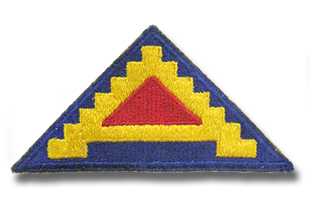
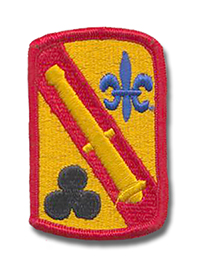
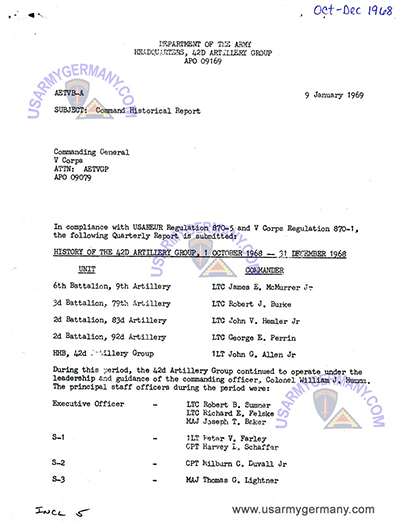
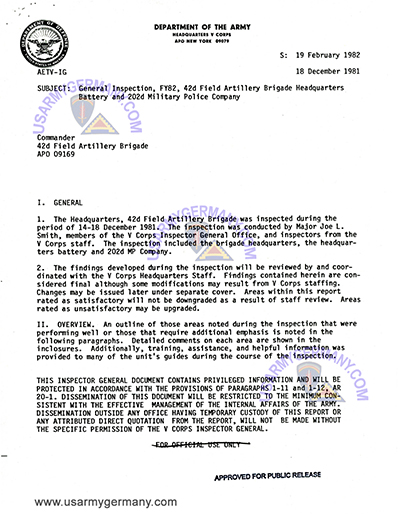
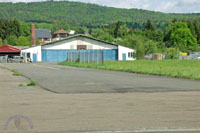
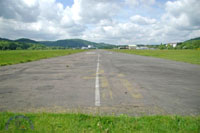
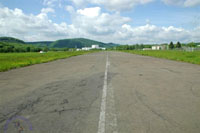
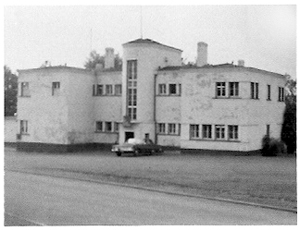
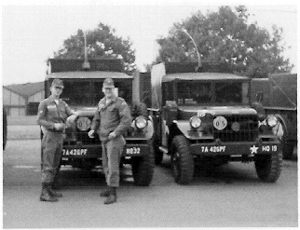
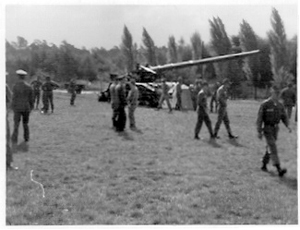
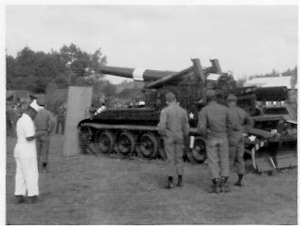
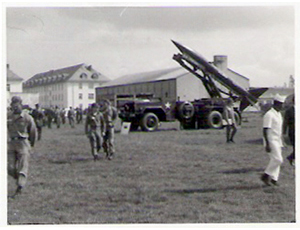
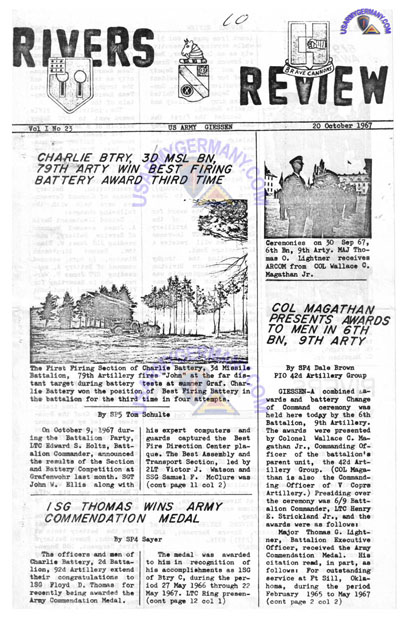

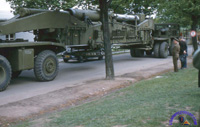
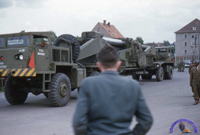
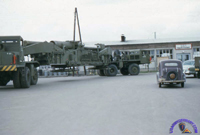
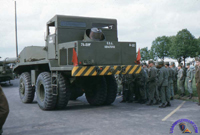
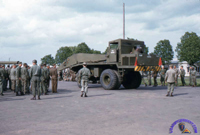
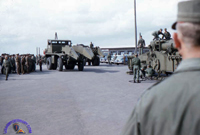
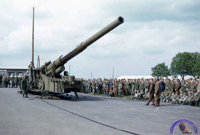
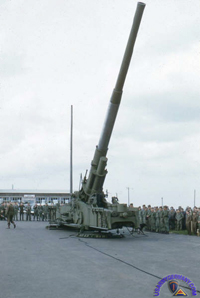
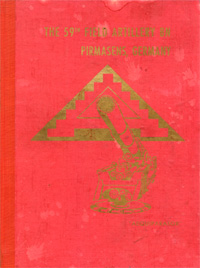
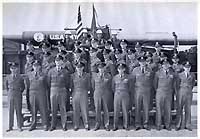
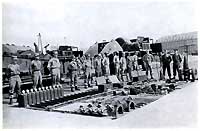
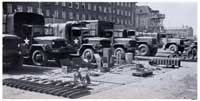

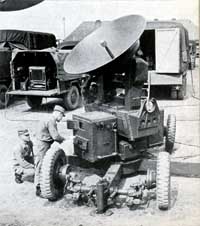
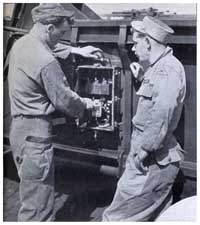
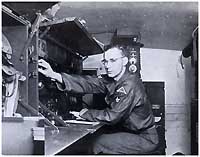
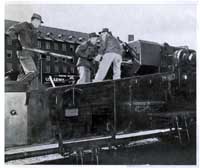
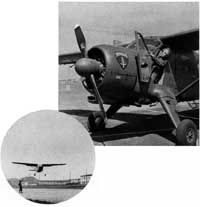
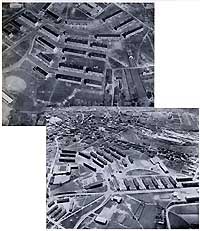
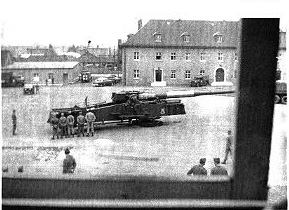
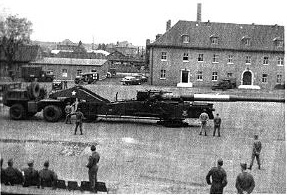
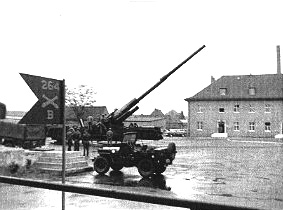
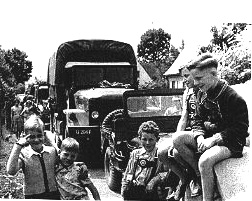
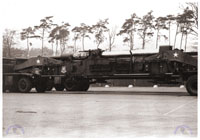
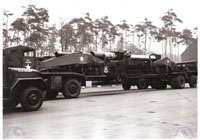
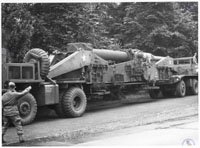
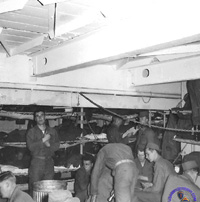
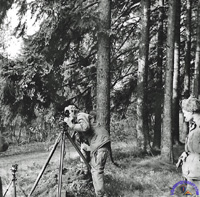
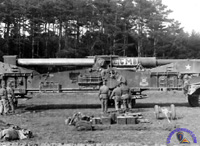
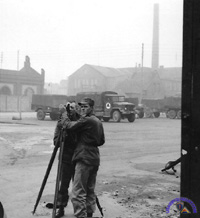
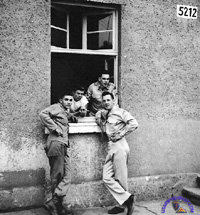
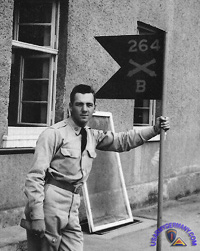
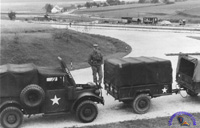
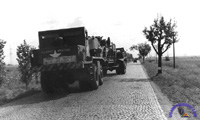
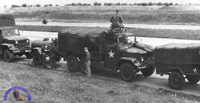
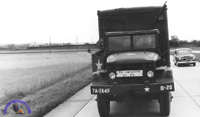

 Des Gouttes Kaserne BK - Jim Lancina 600.jpg)
 Des Gouttes Kaserne BK - Jim Lancina 1 600.jpg)
 Des Gouttes Kaserne BK - Jim Lancina 4 600.jpg)
 Des Gouttes Kaserne BK - Jim Lancina 6 600.jpg)
 Des Gouttes Kaserne BK - Jim Lancina 2 sm.jpg)
 Des Gouttes Kaserne BK - Jim Lancina 3 sm.jpg)
 Des Gouttes Kaserne BK - Jim Lancina 5 sm.jpg)
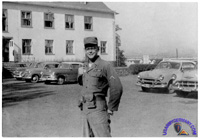
 at Baumholder early 1950s 600.jpg)

